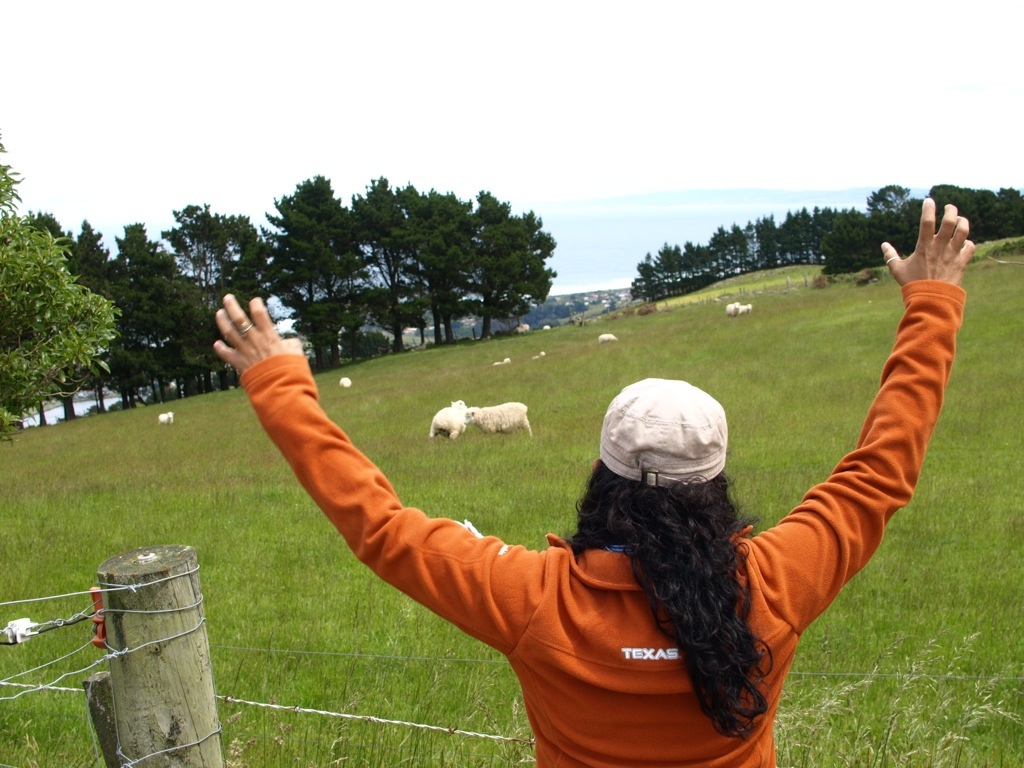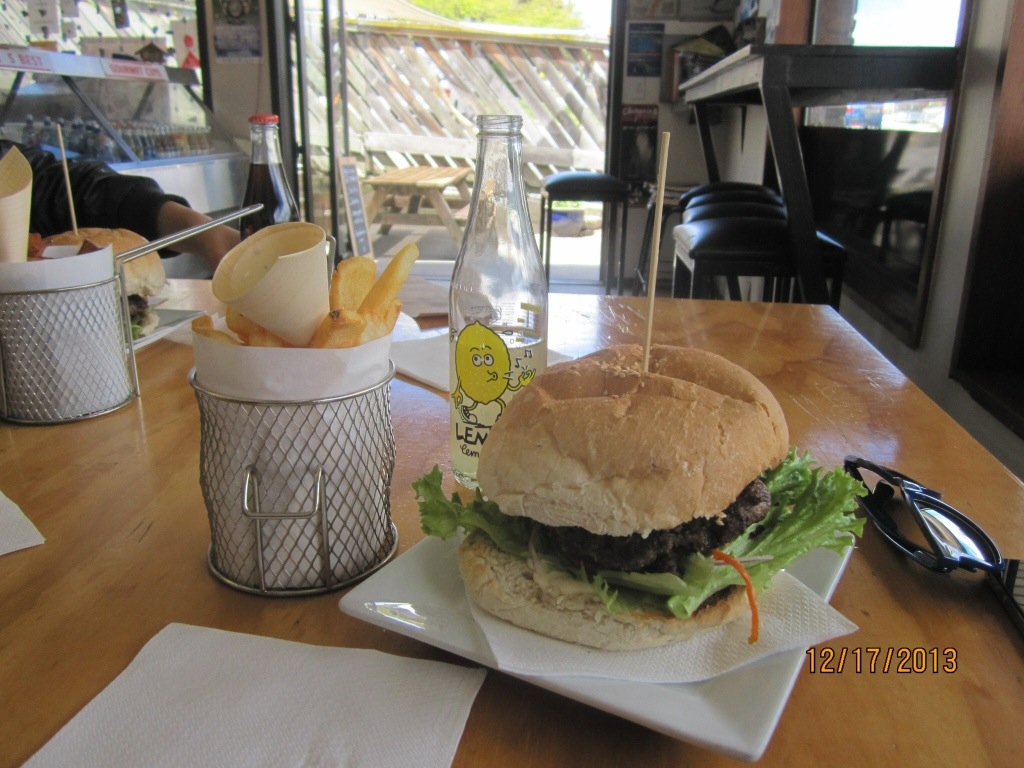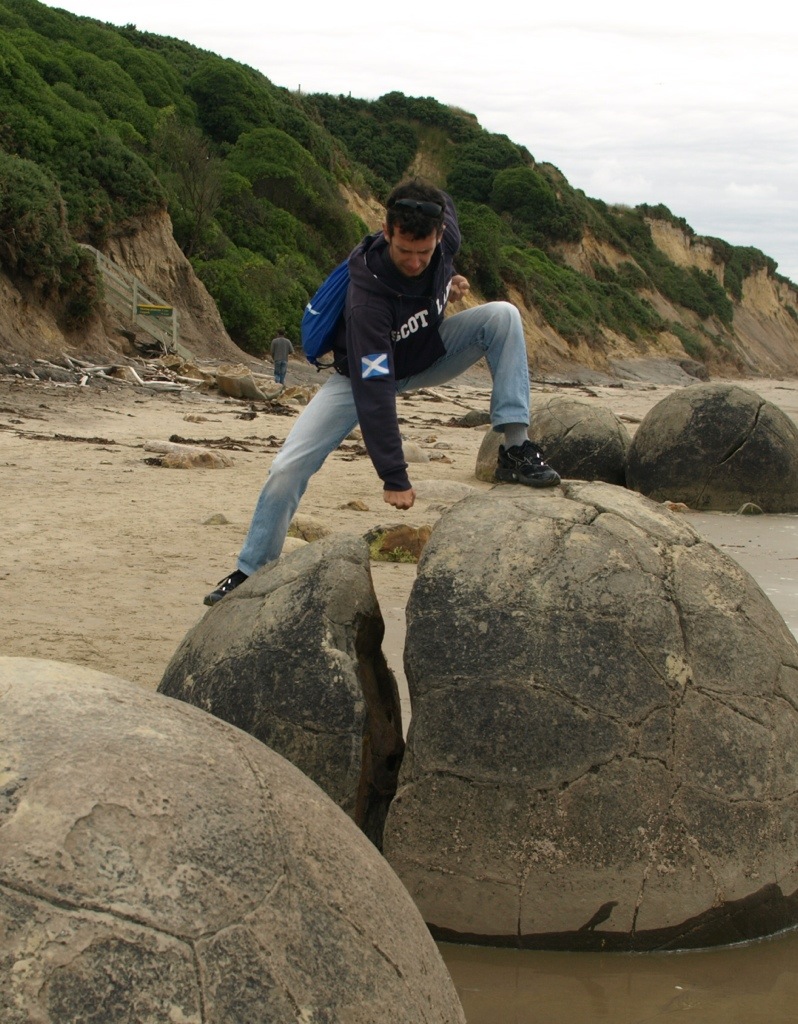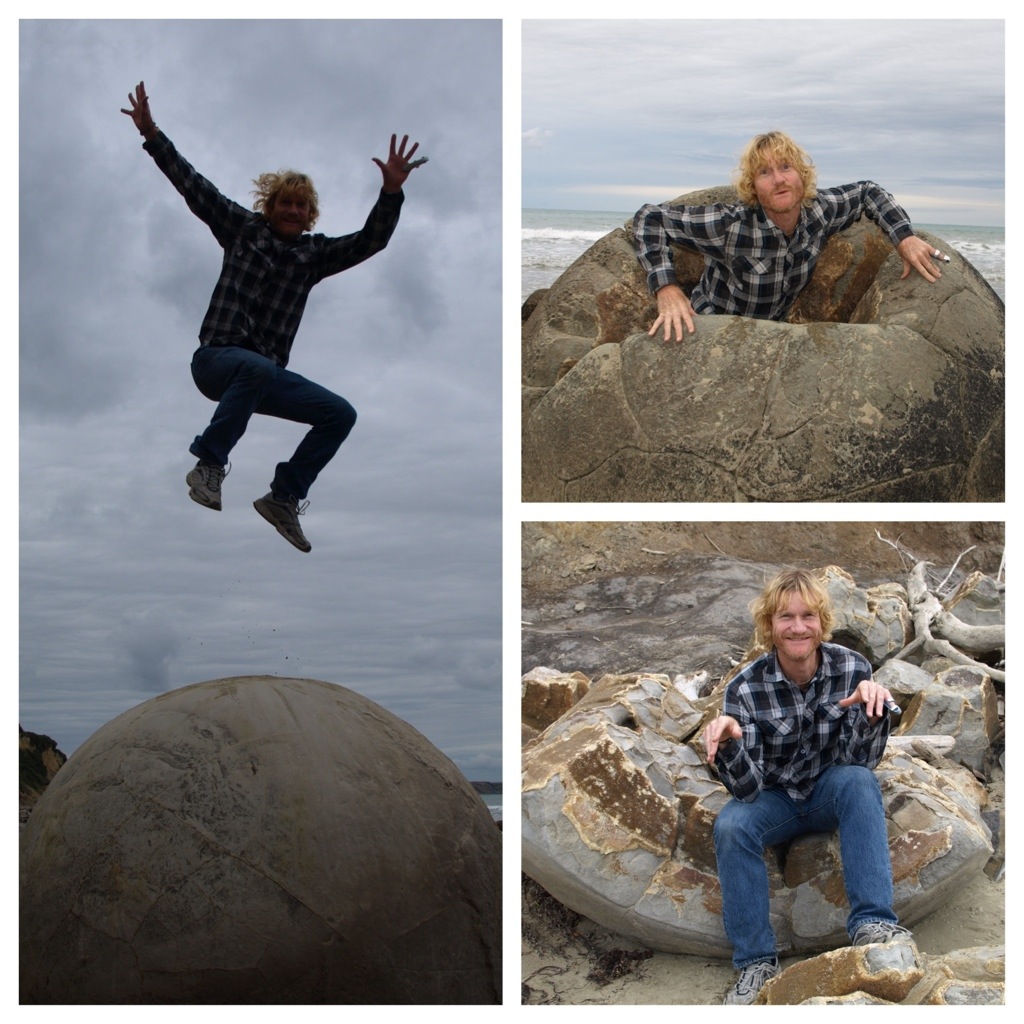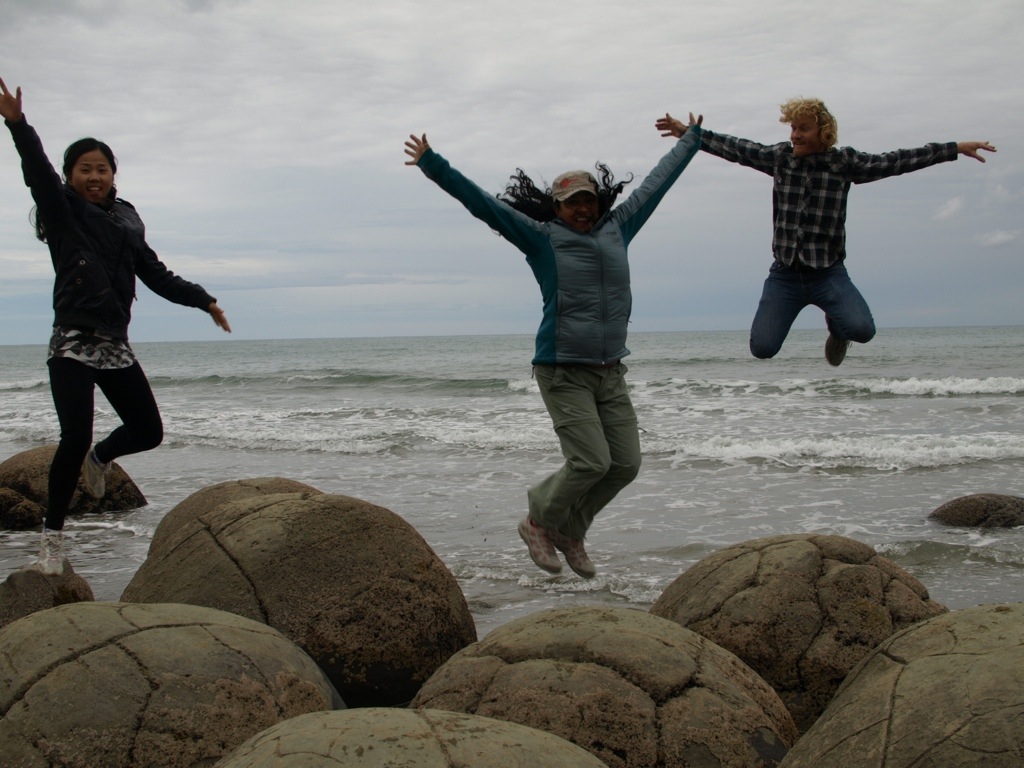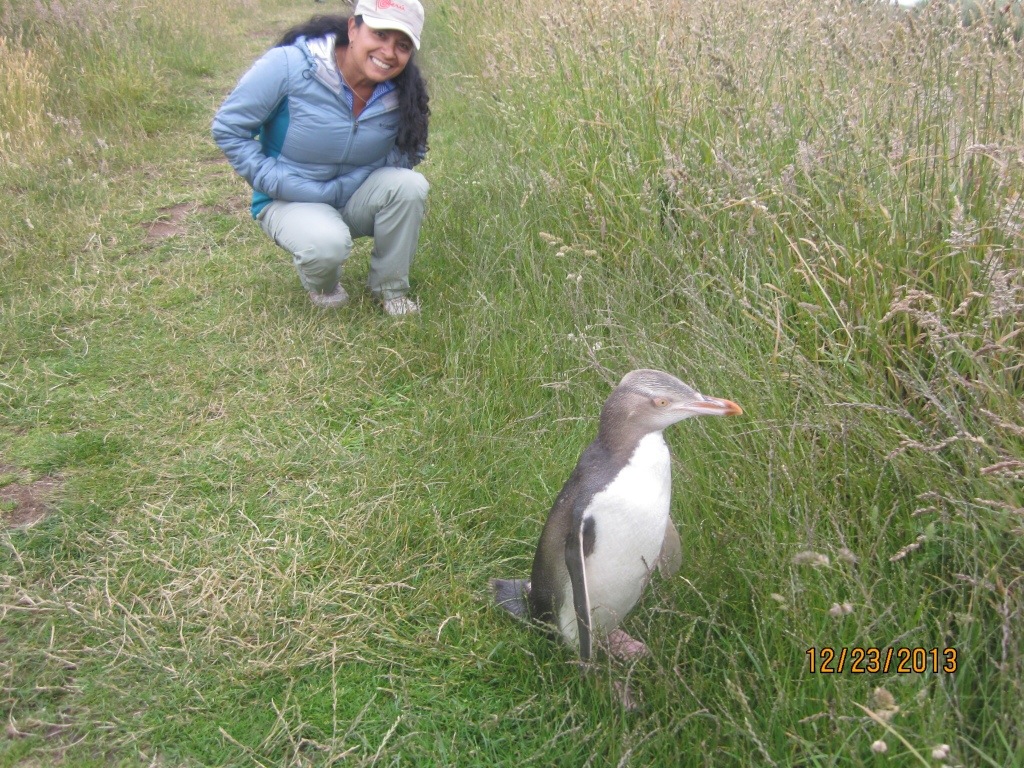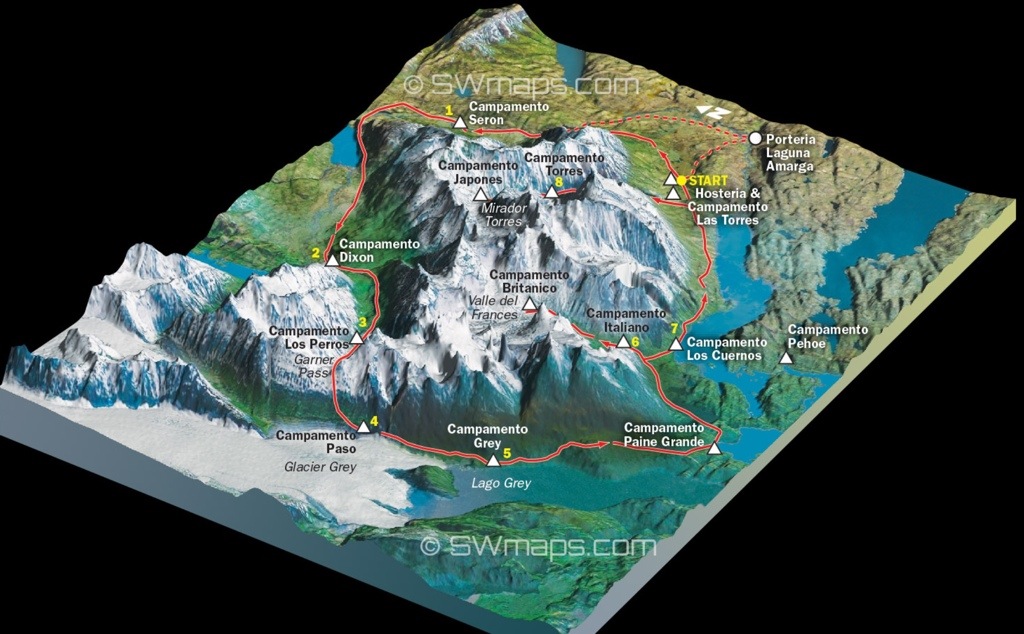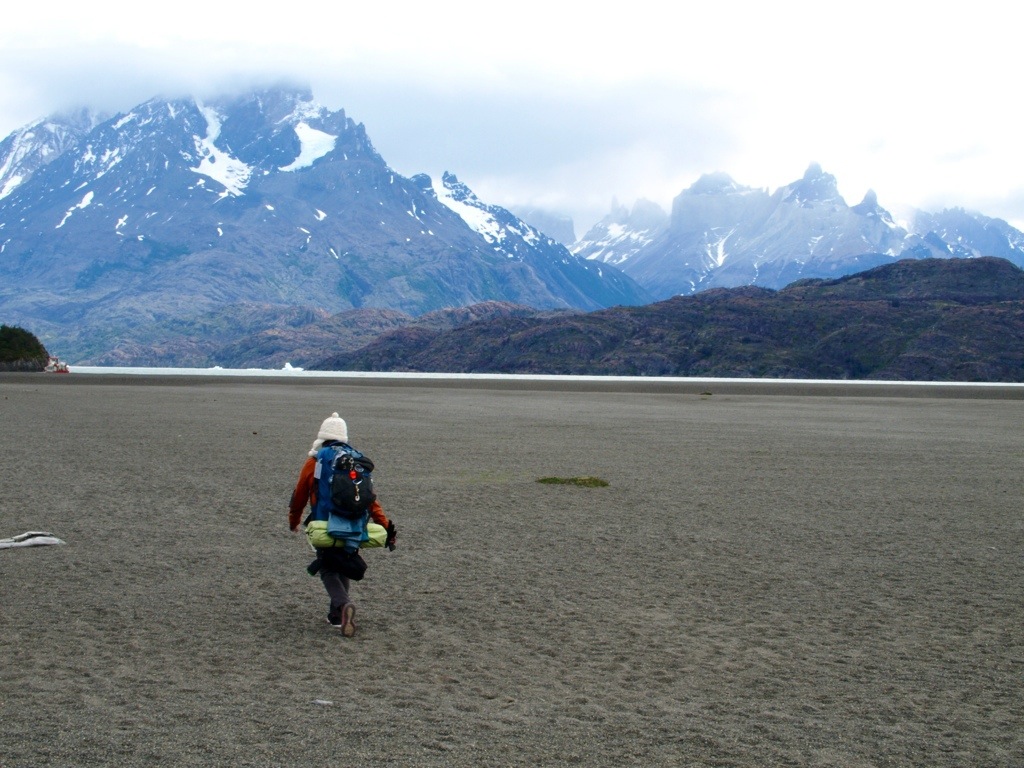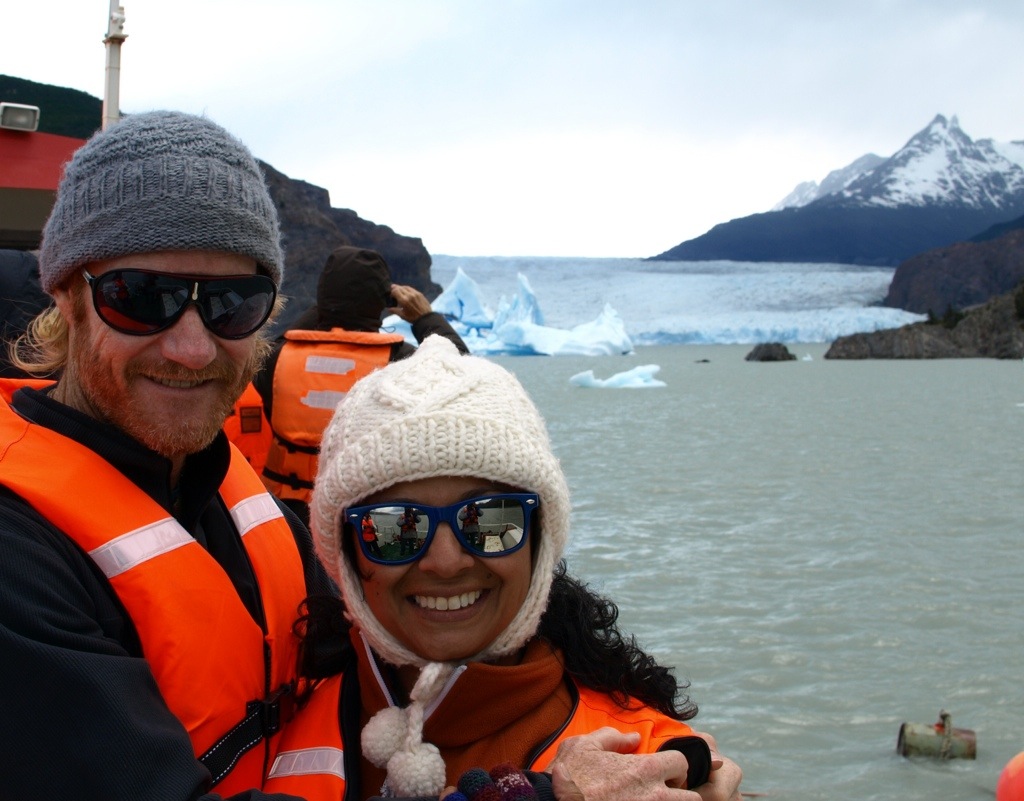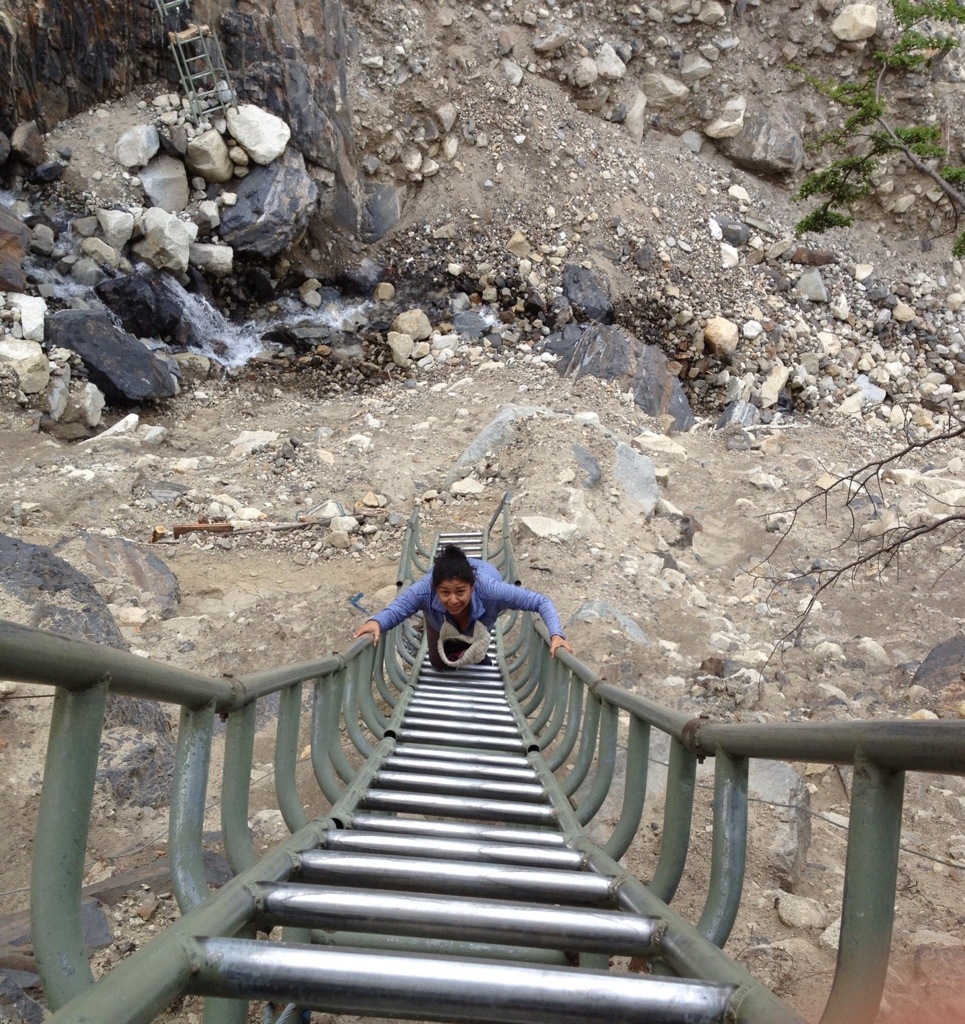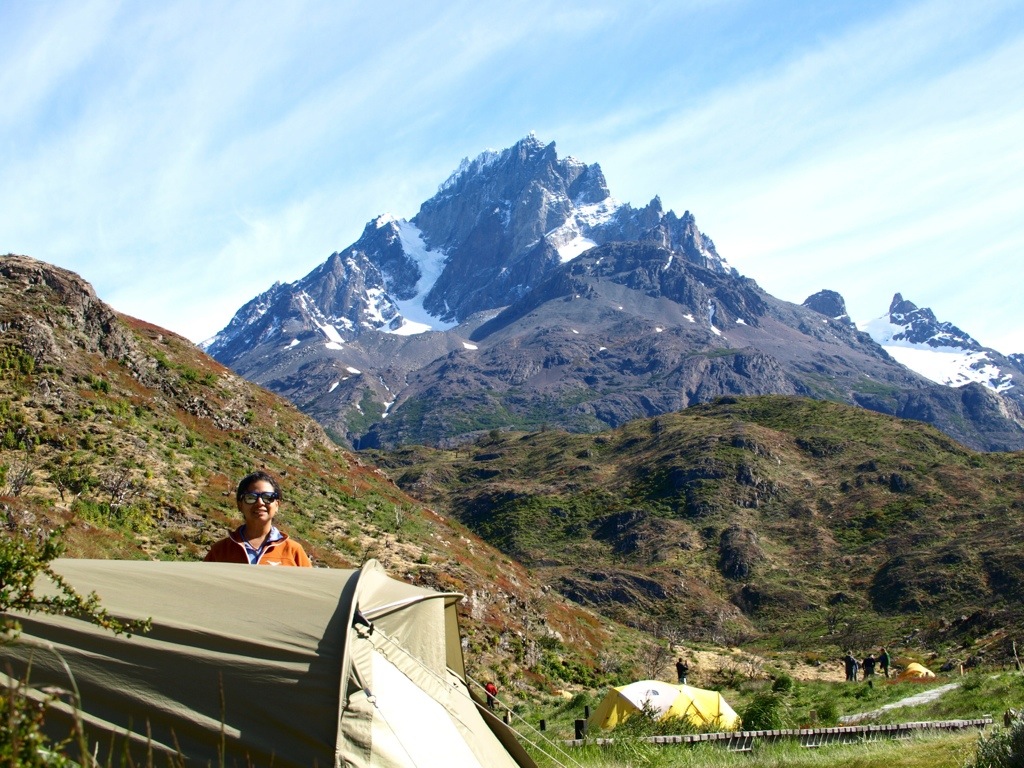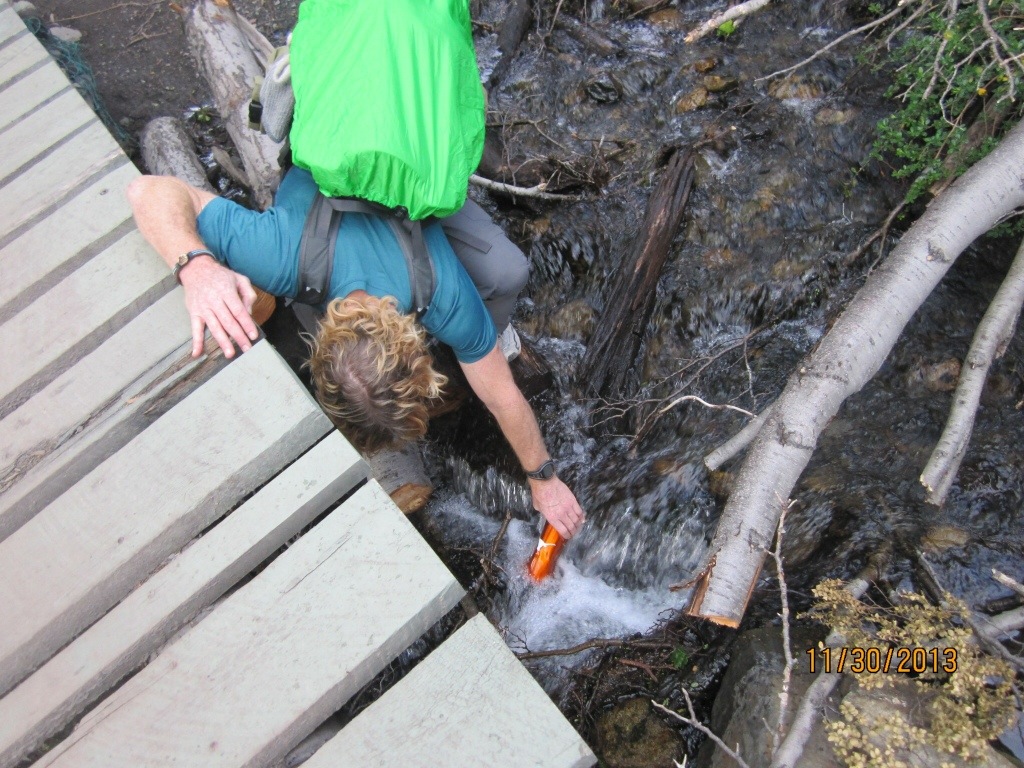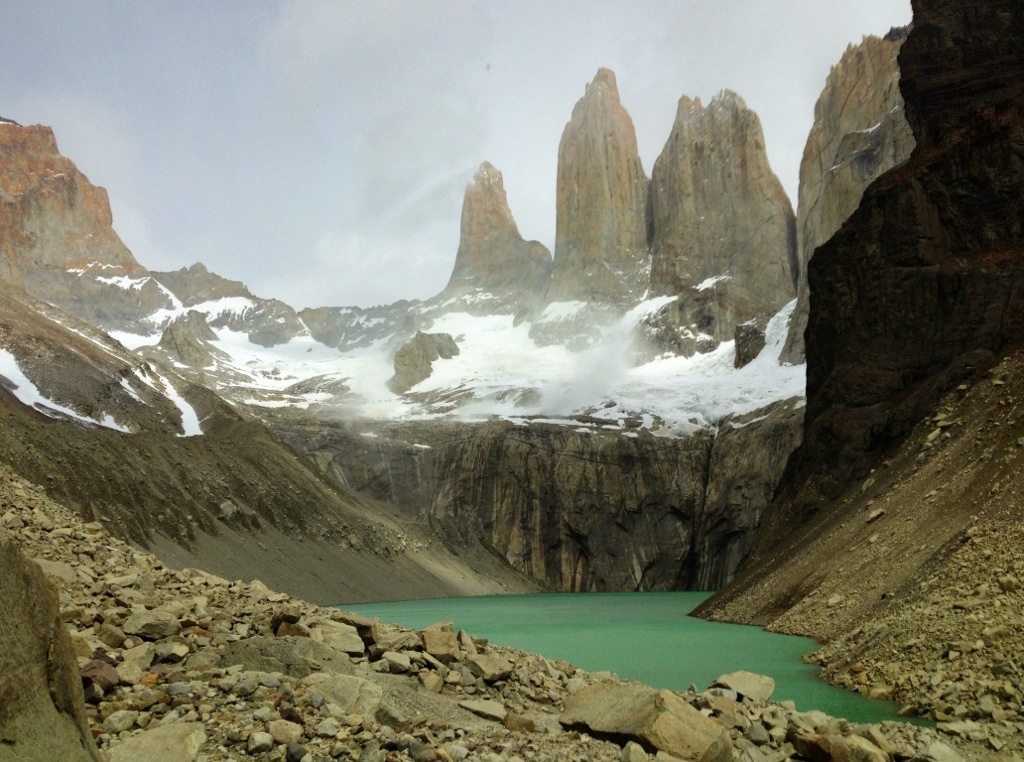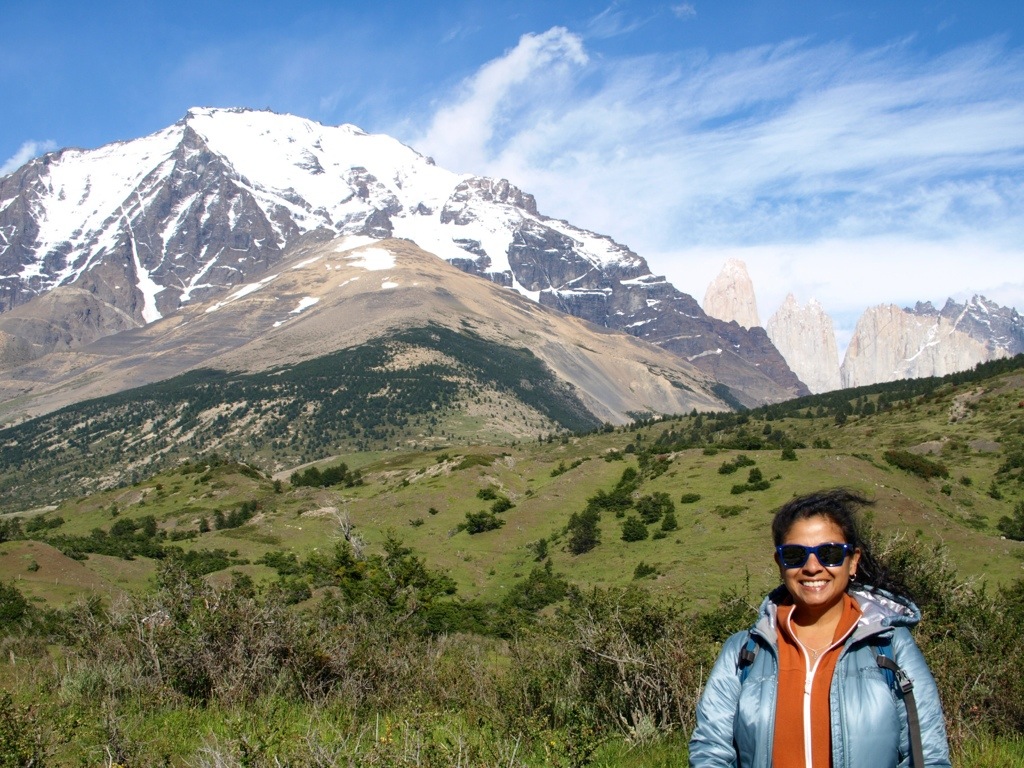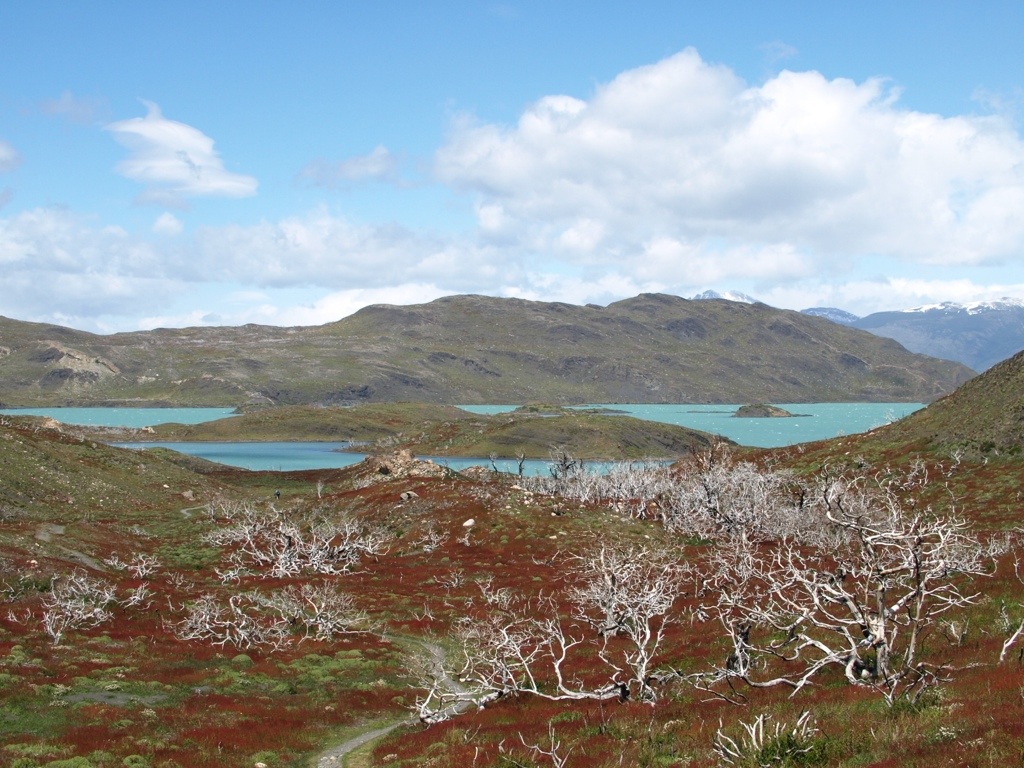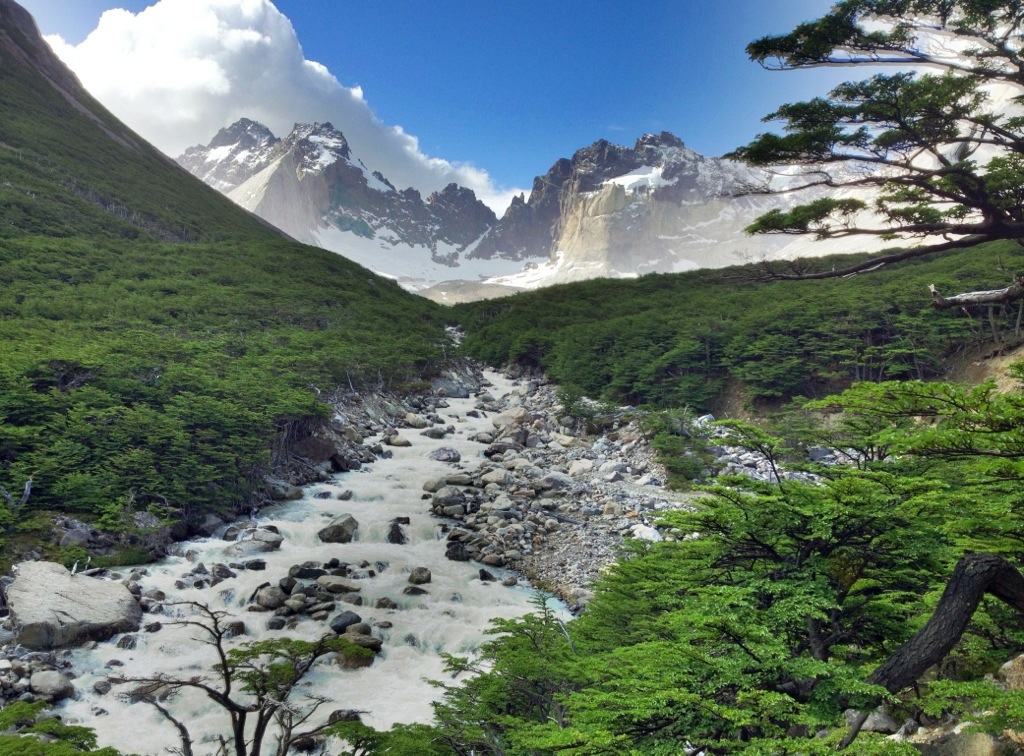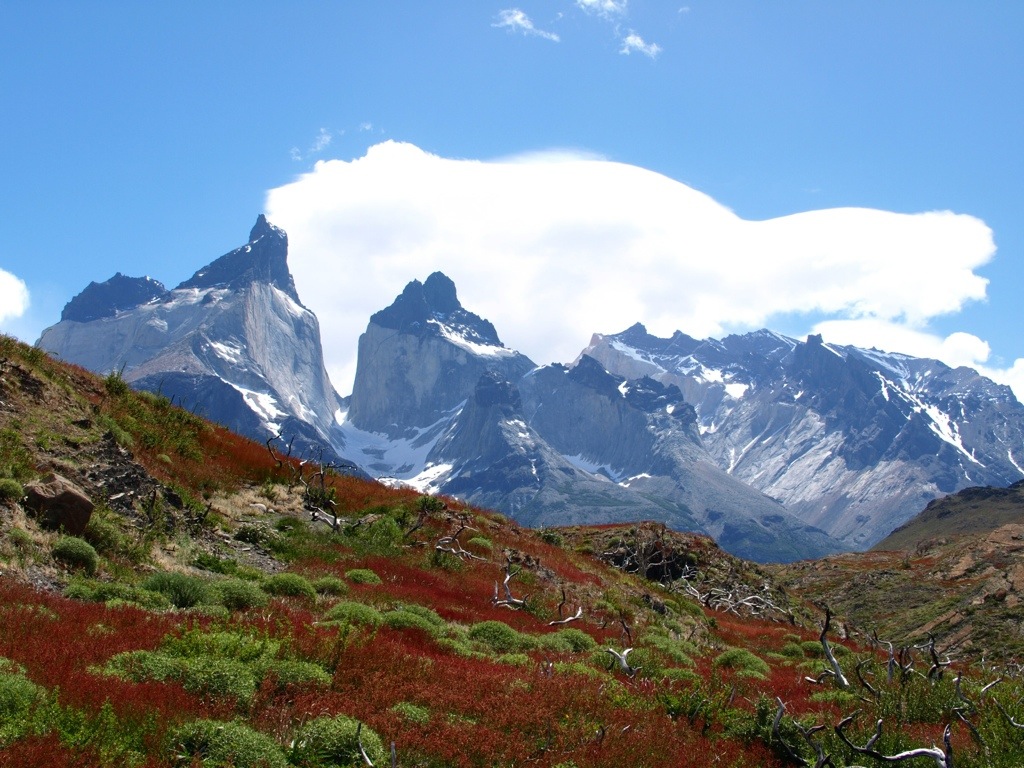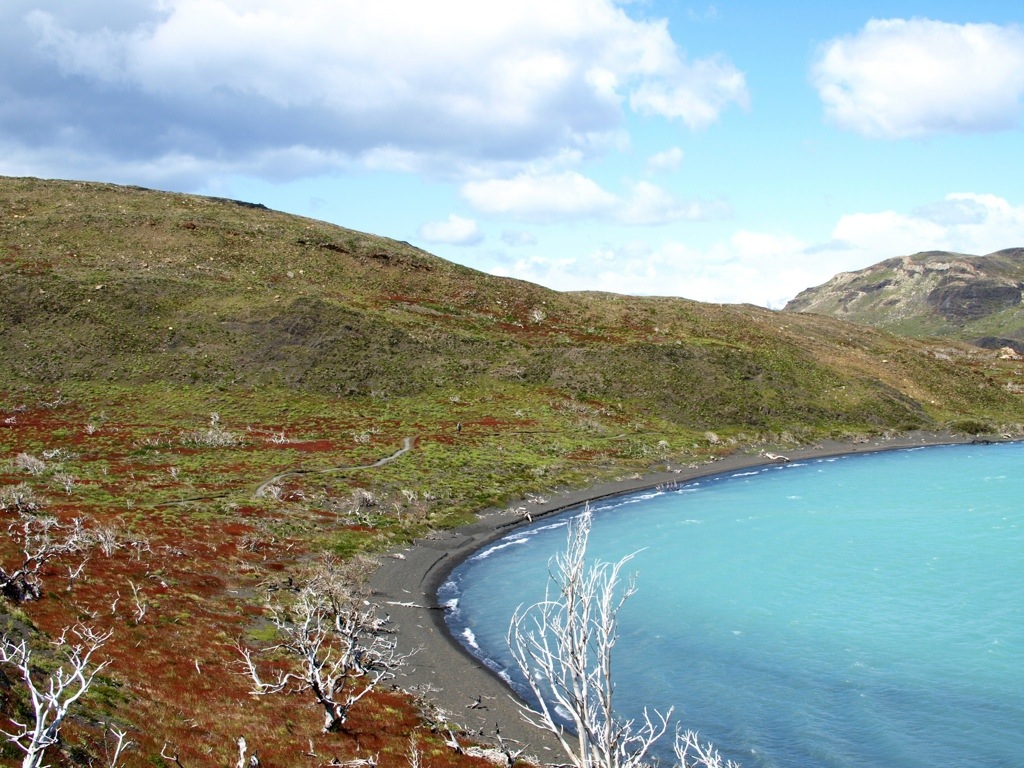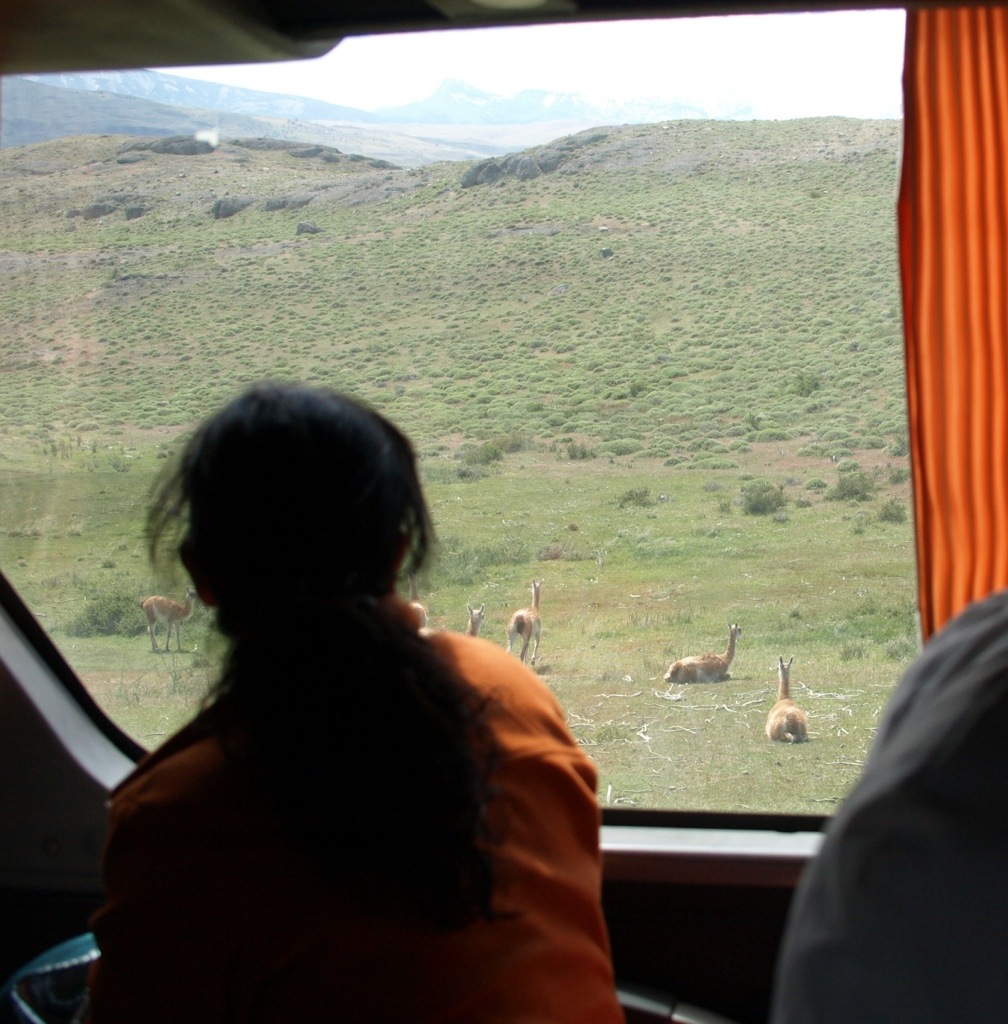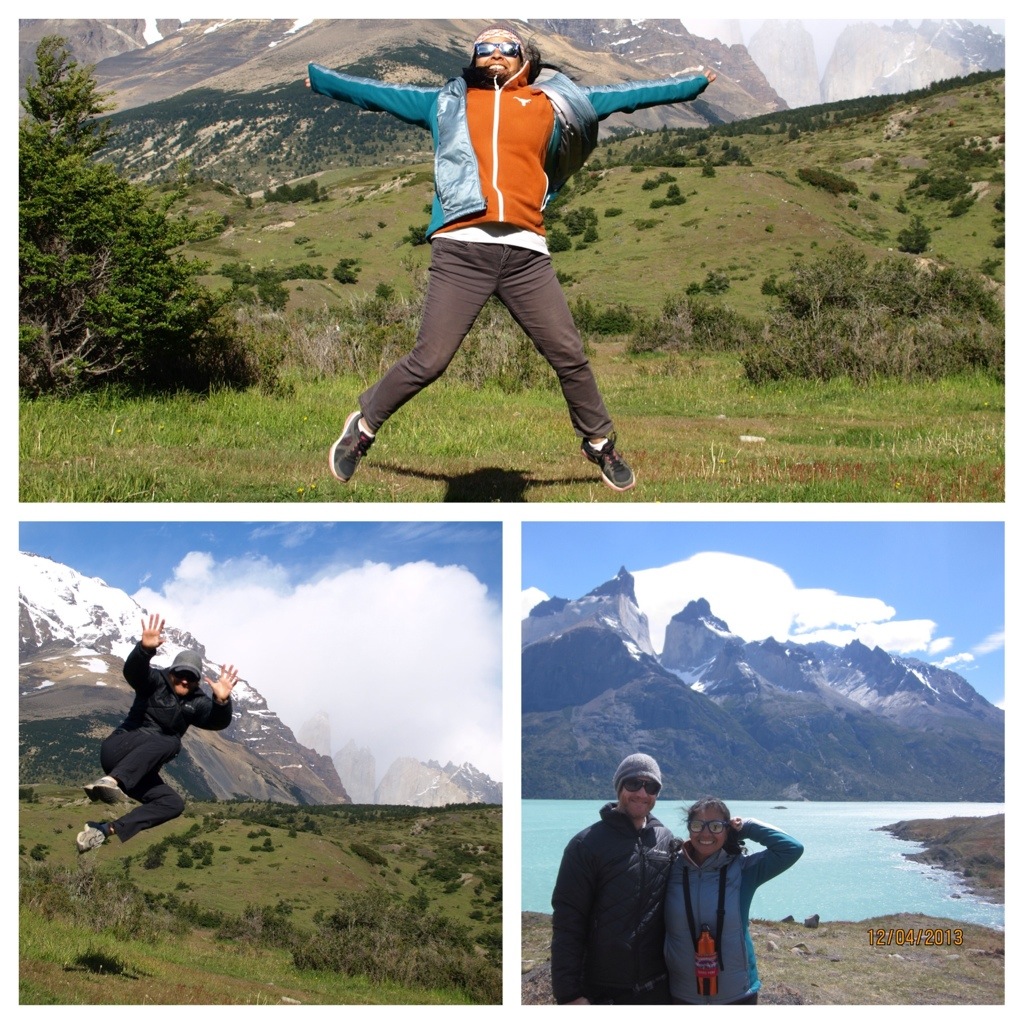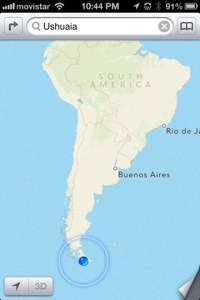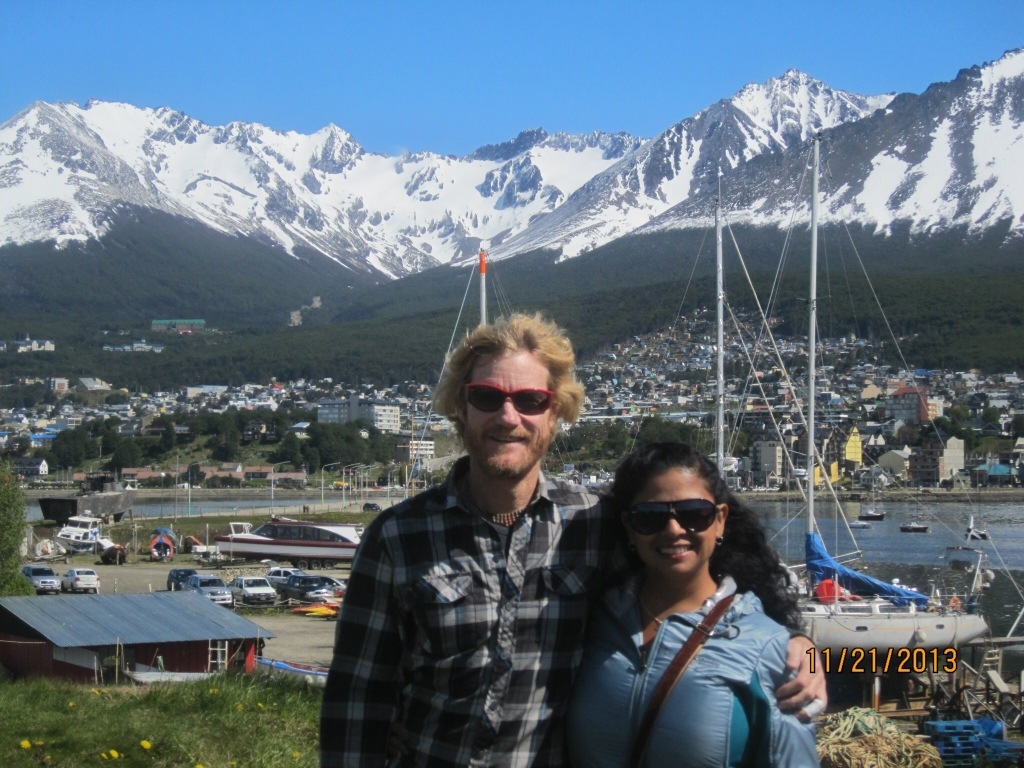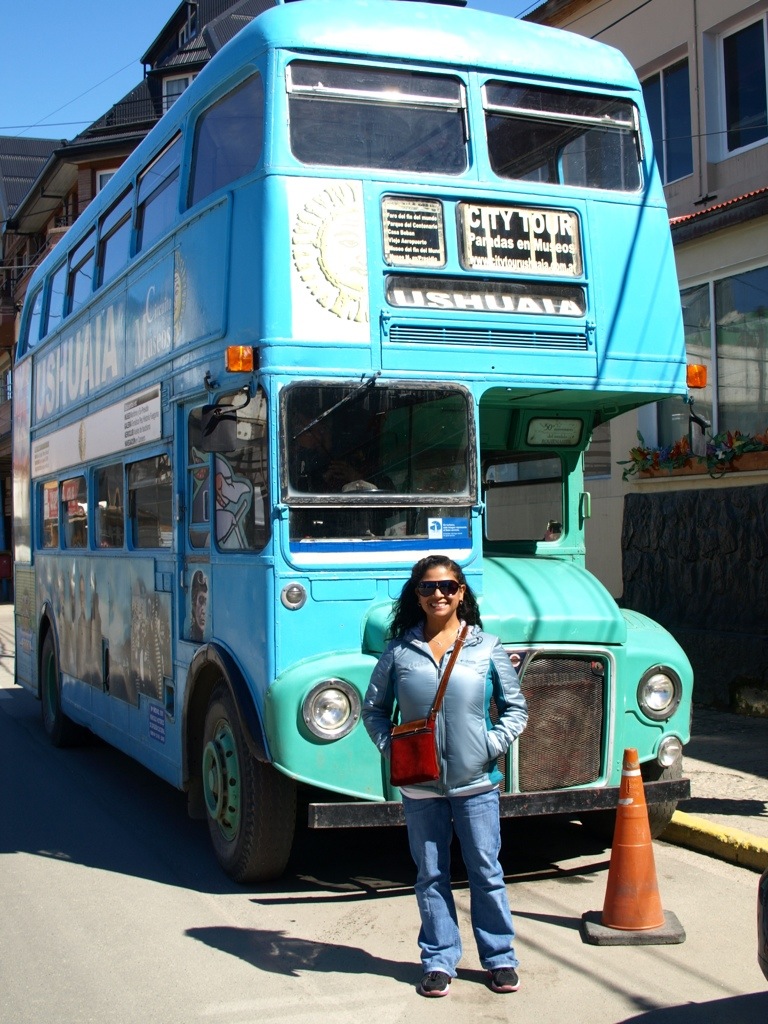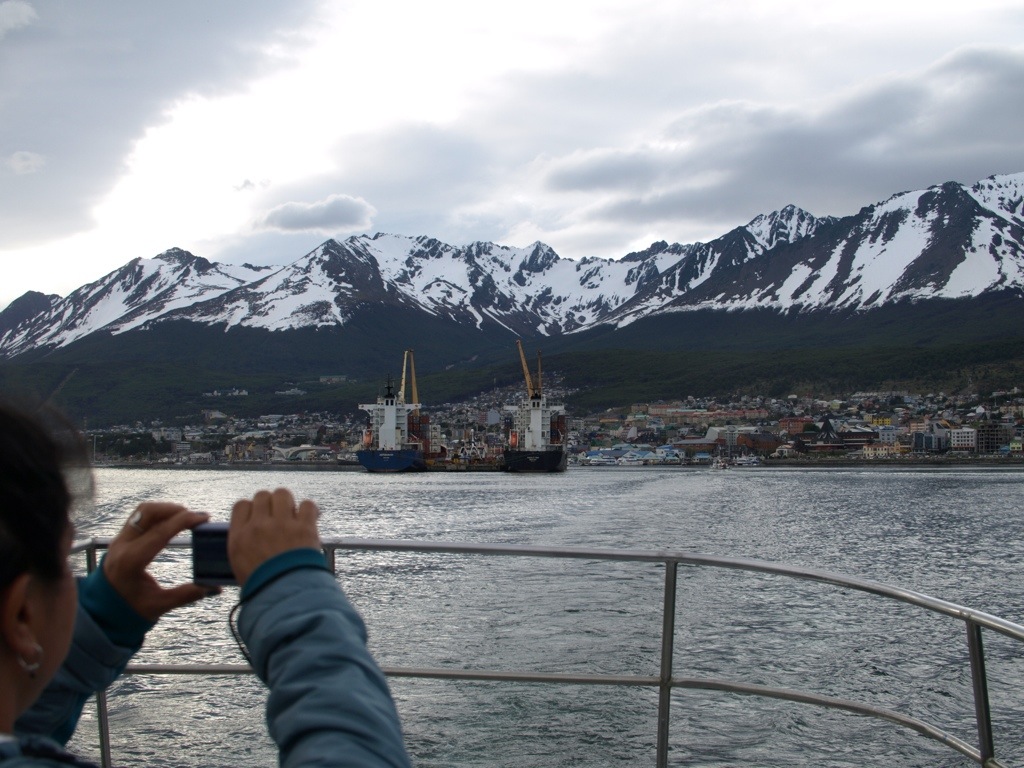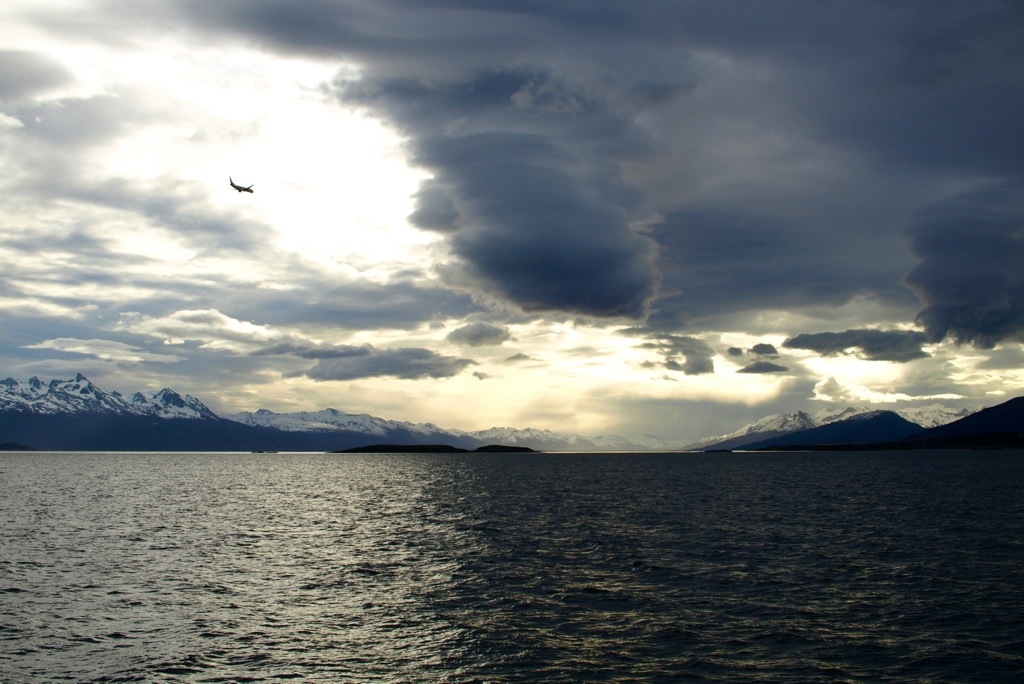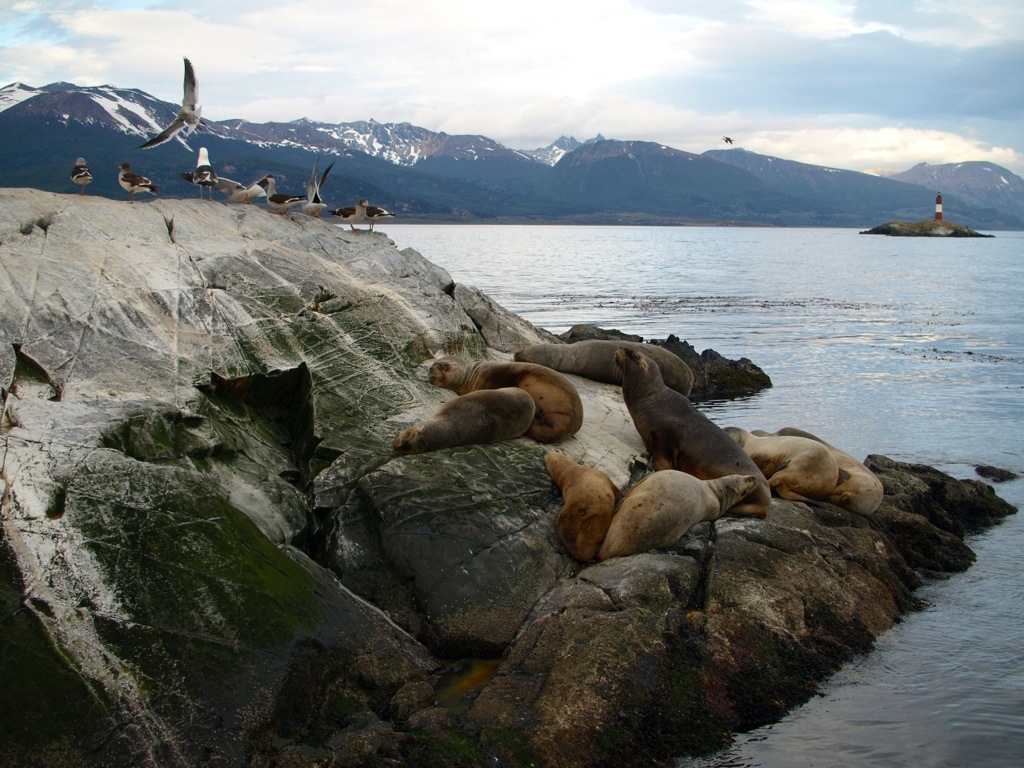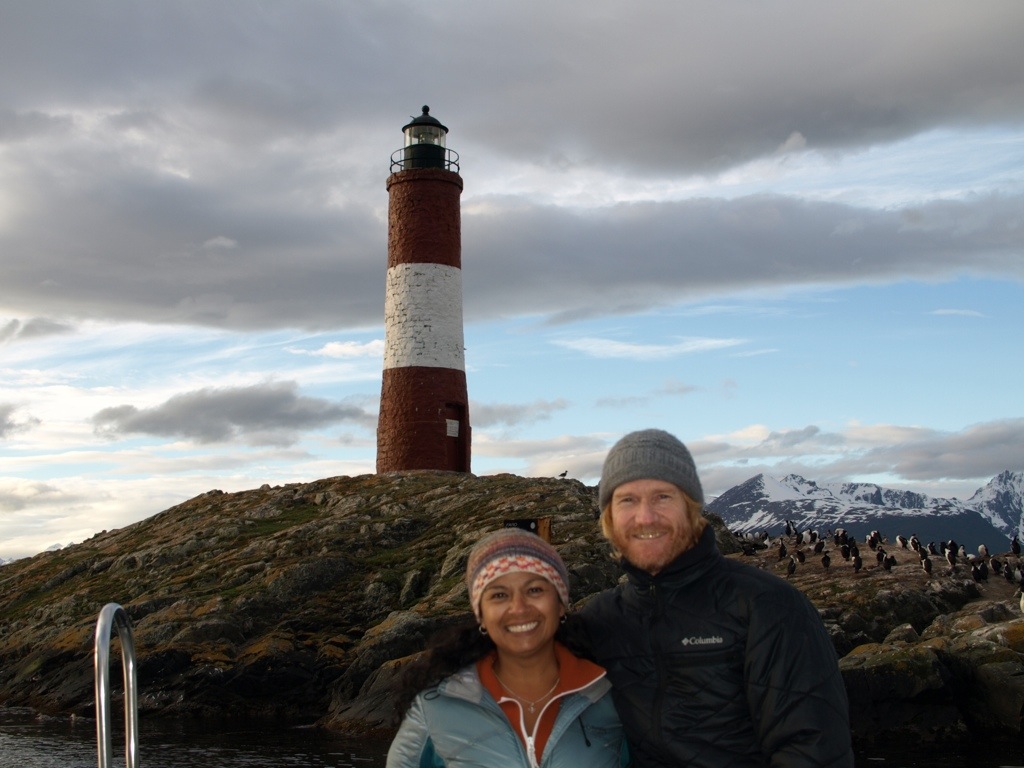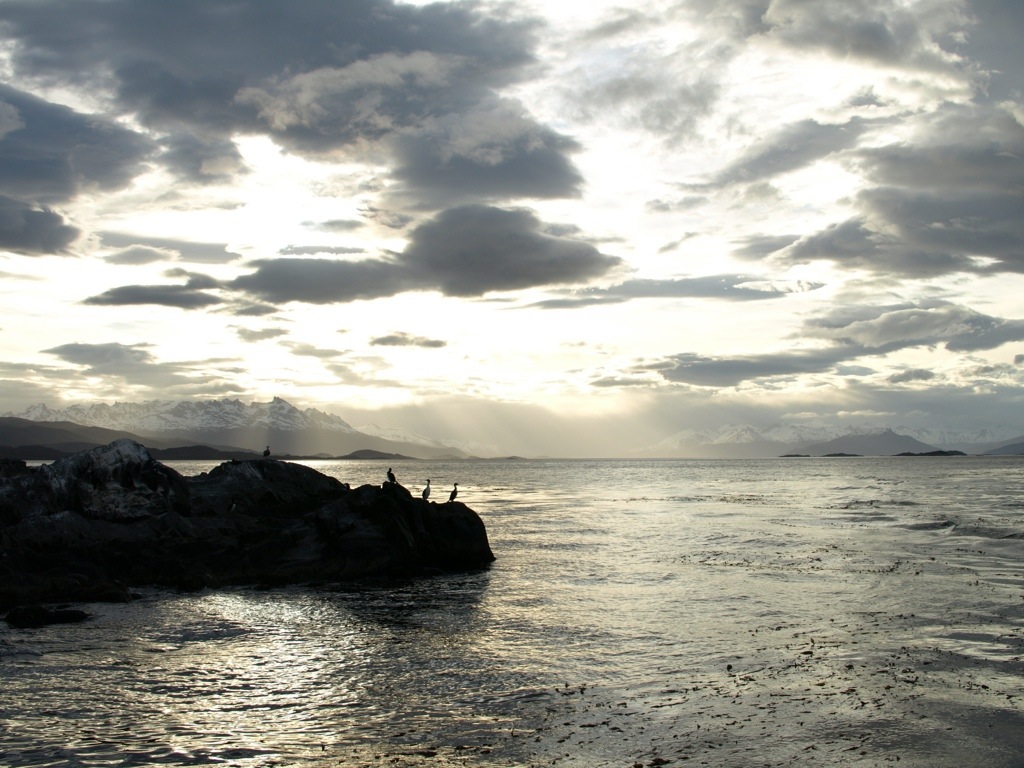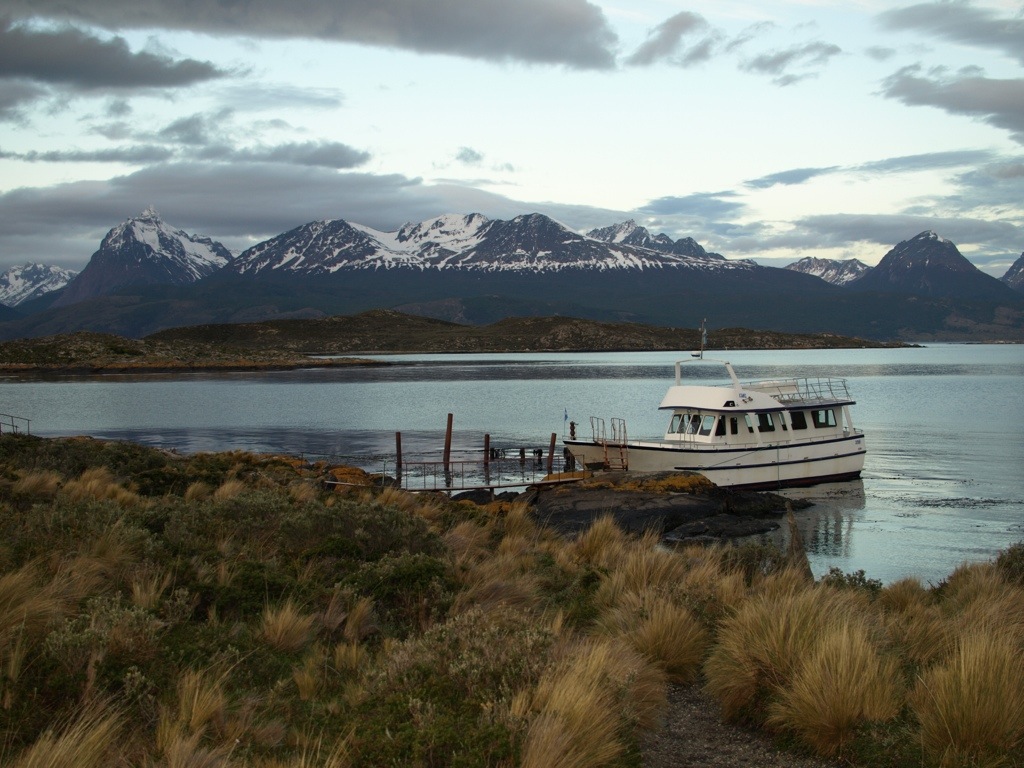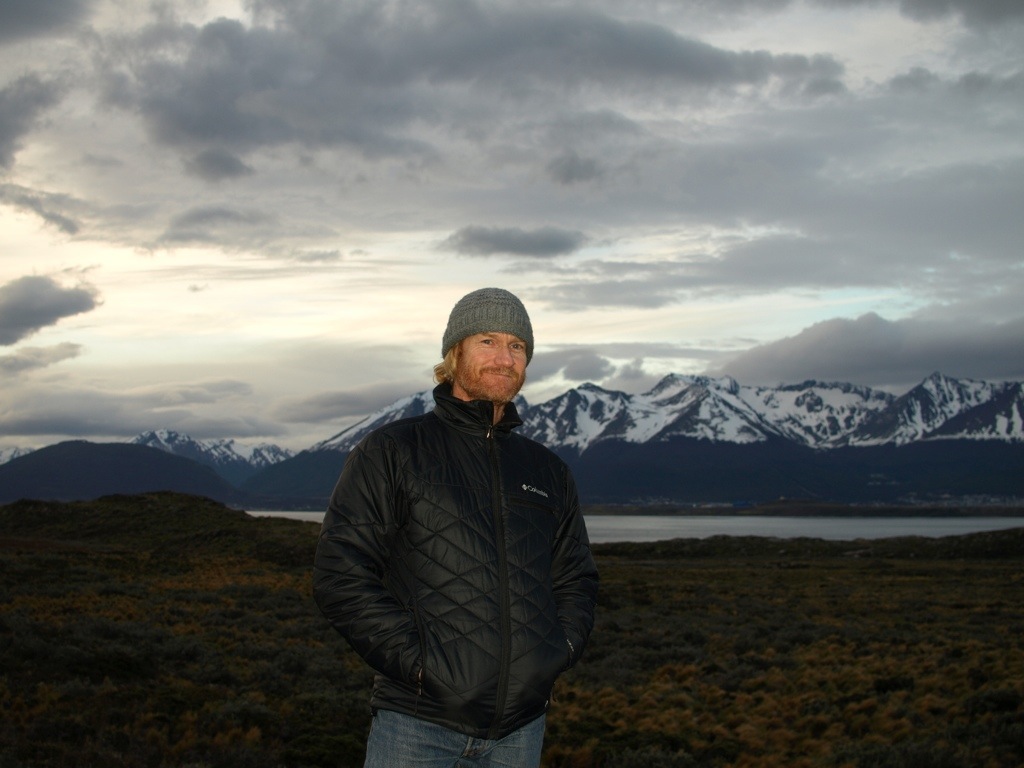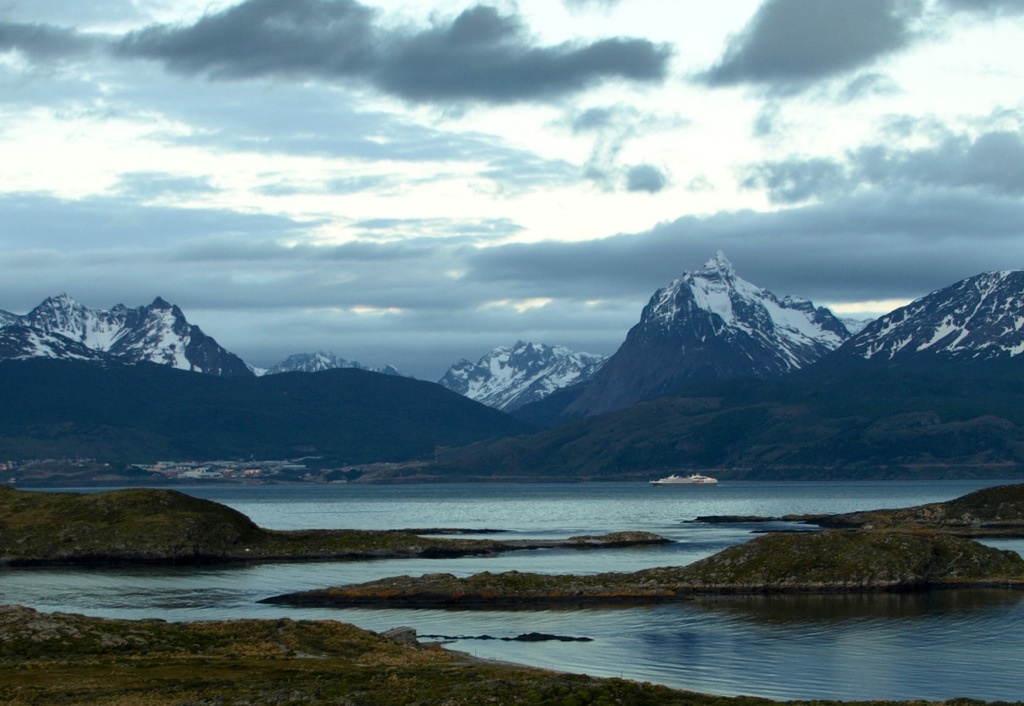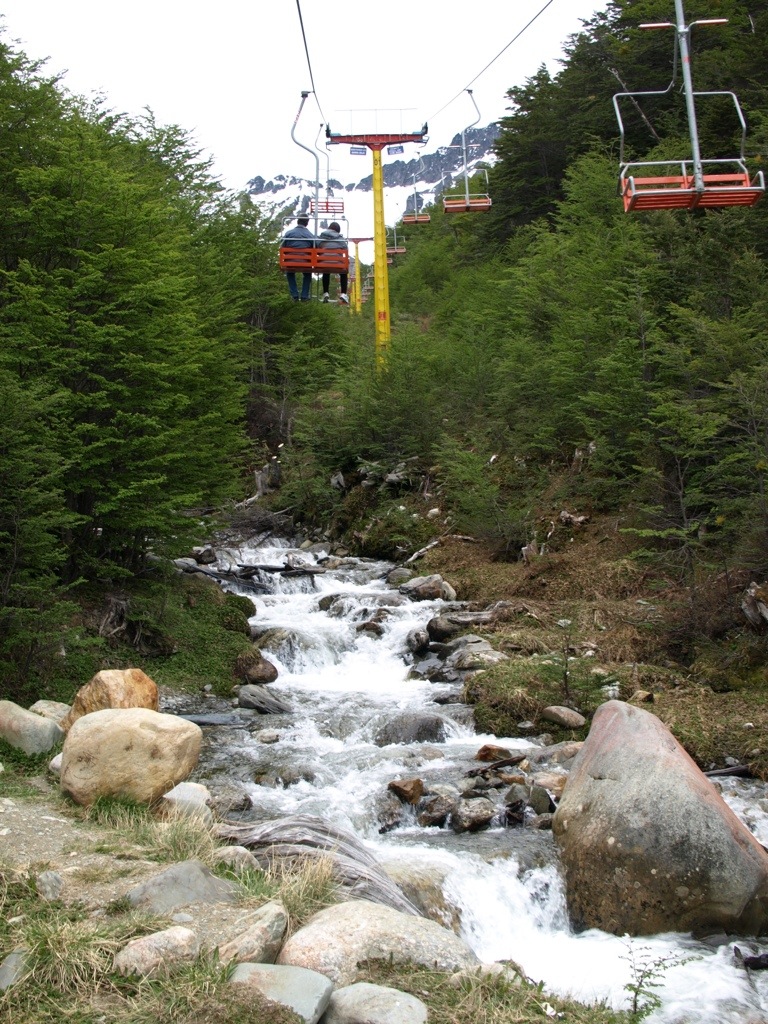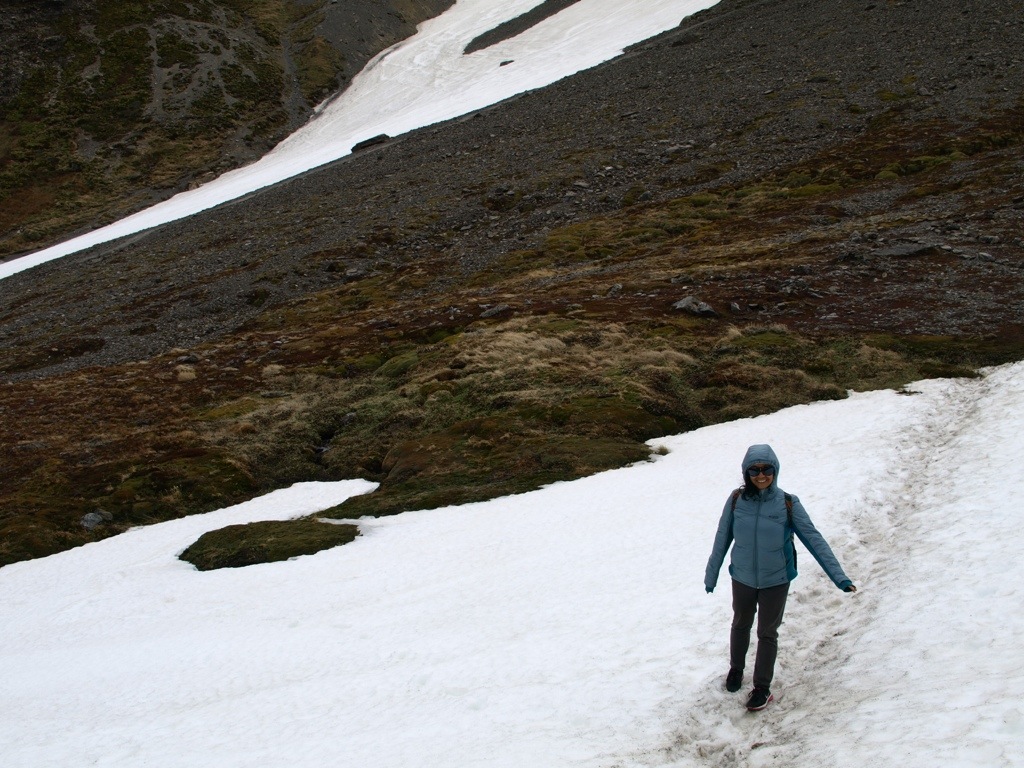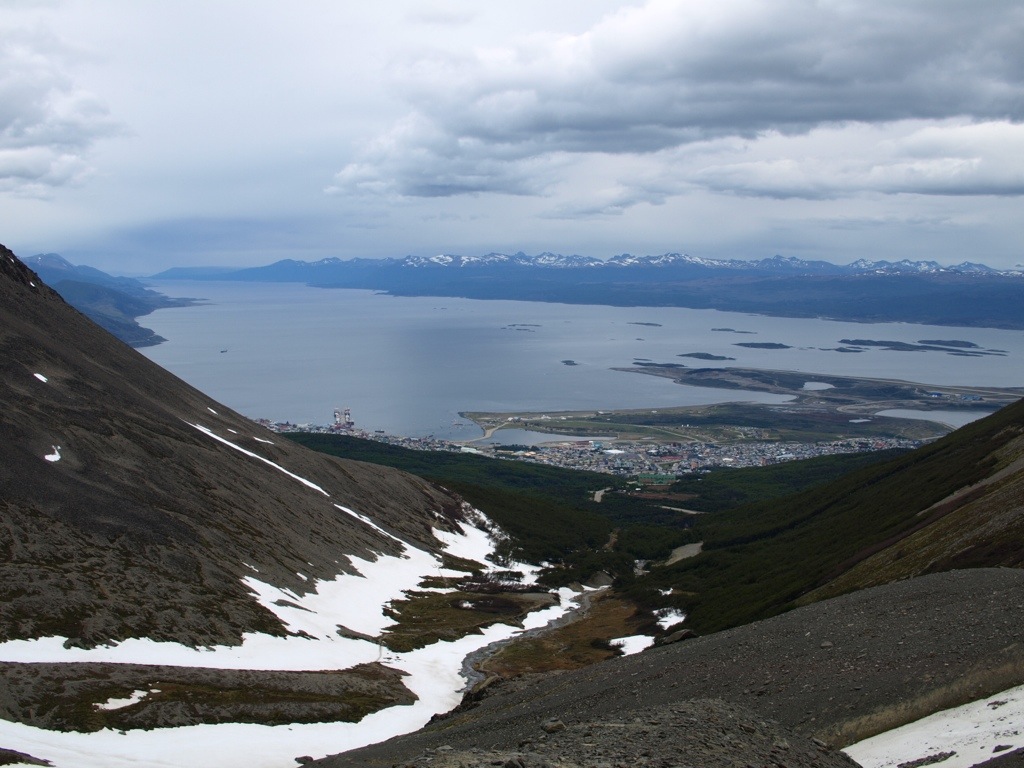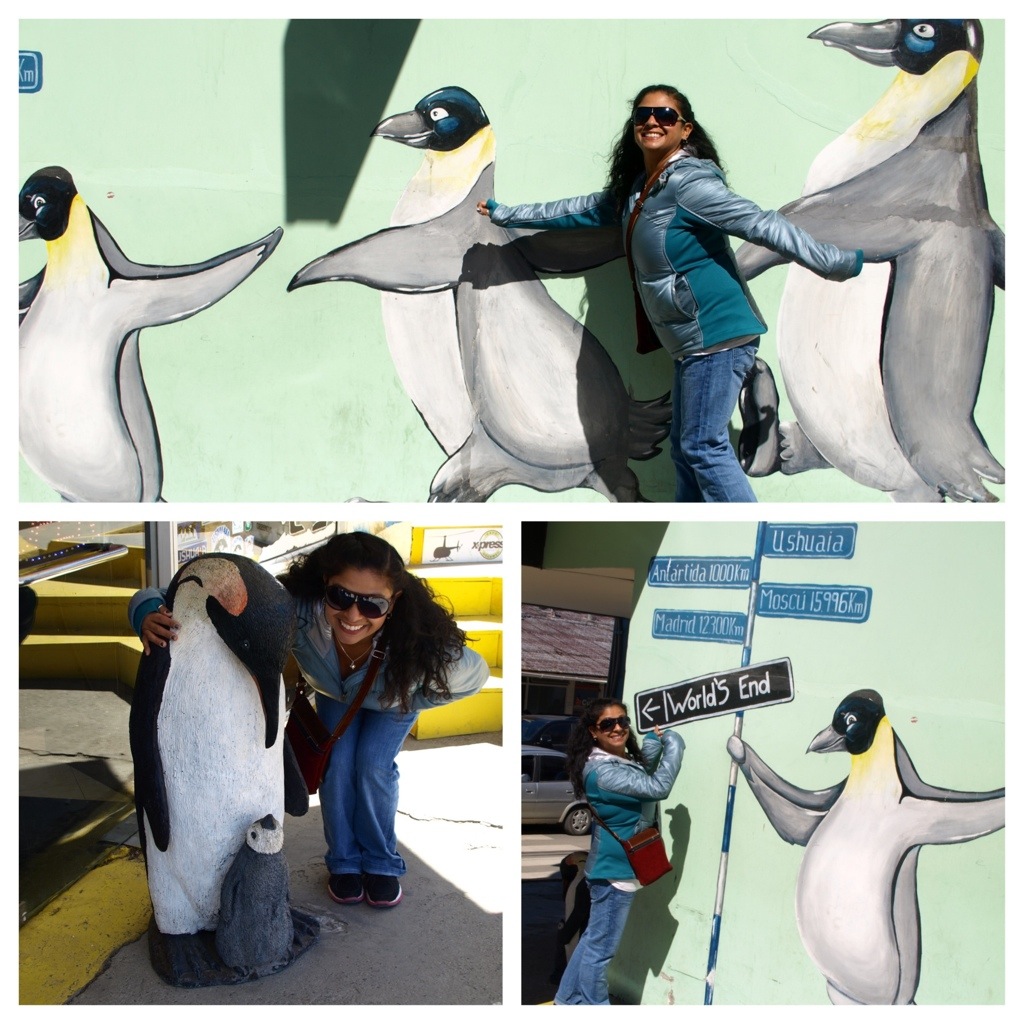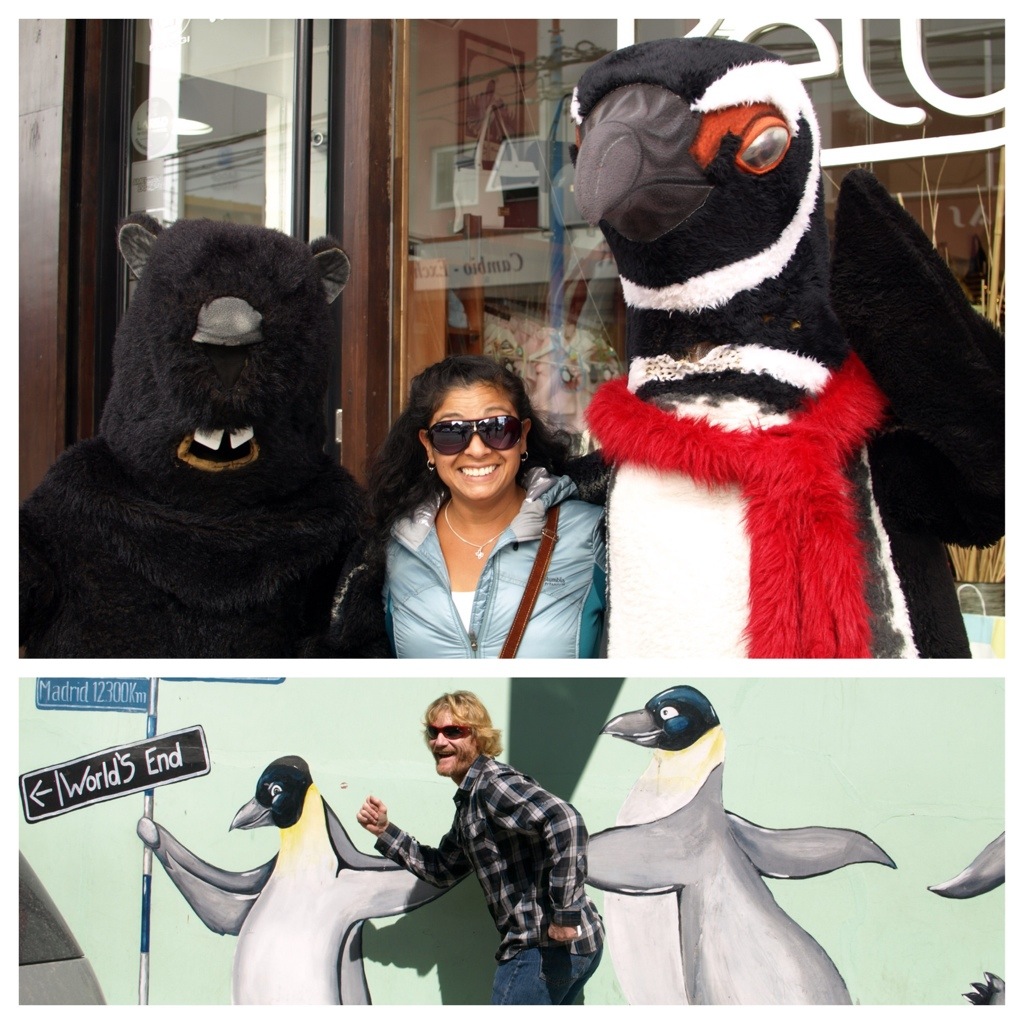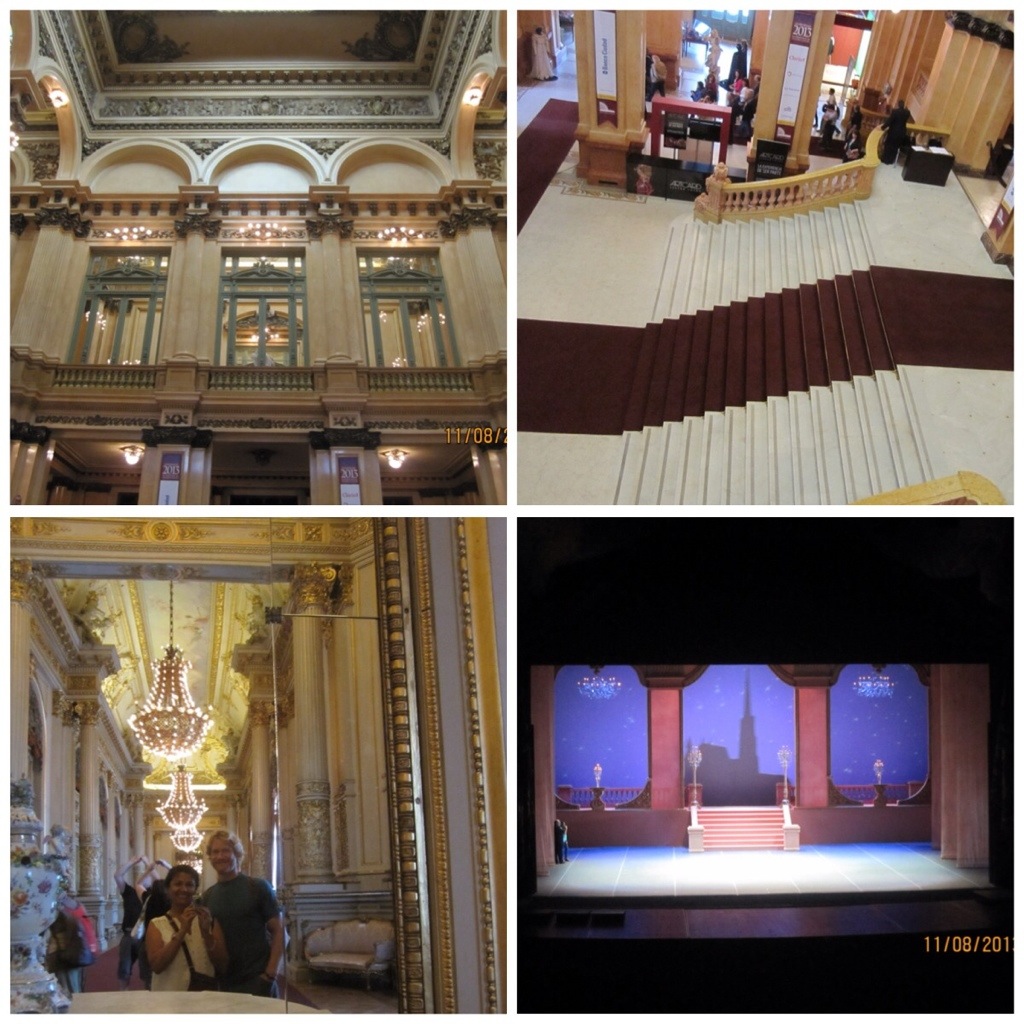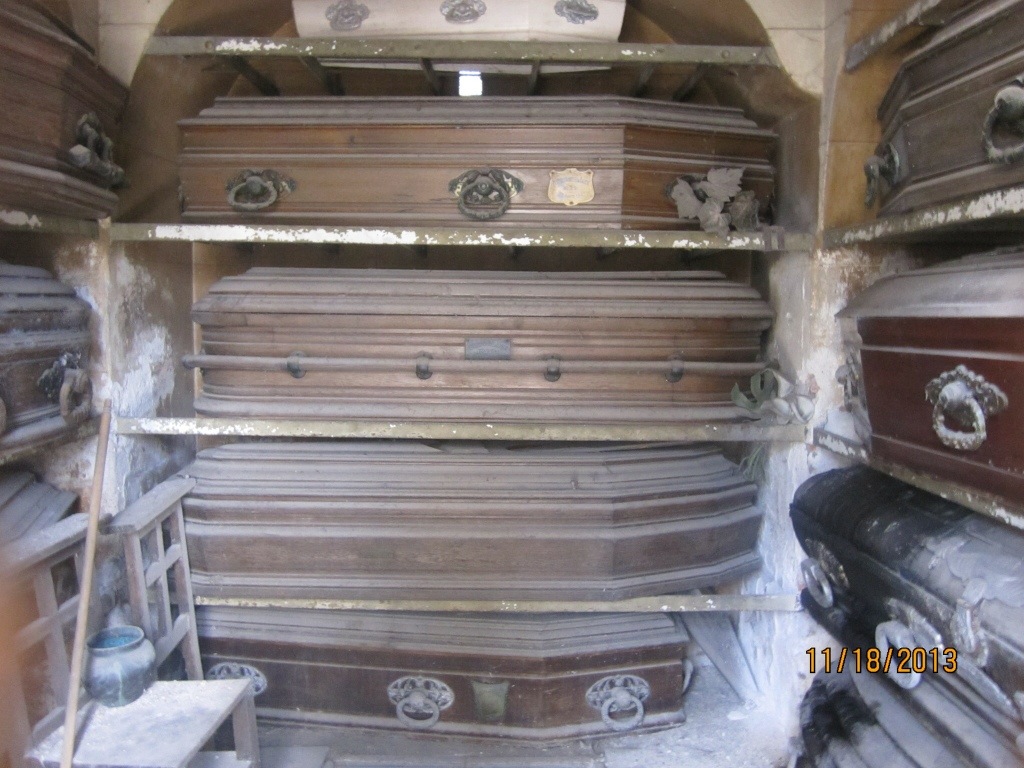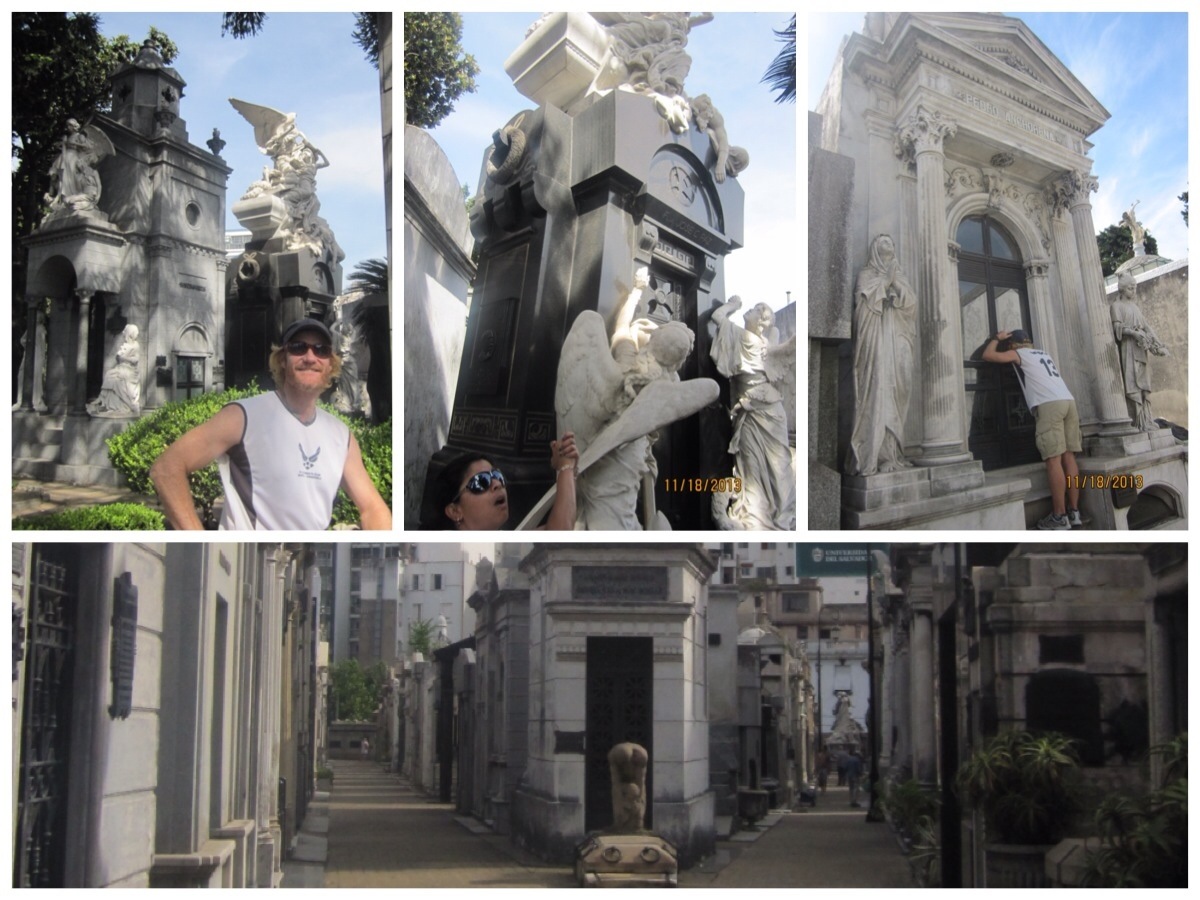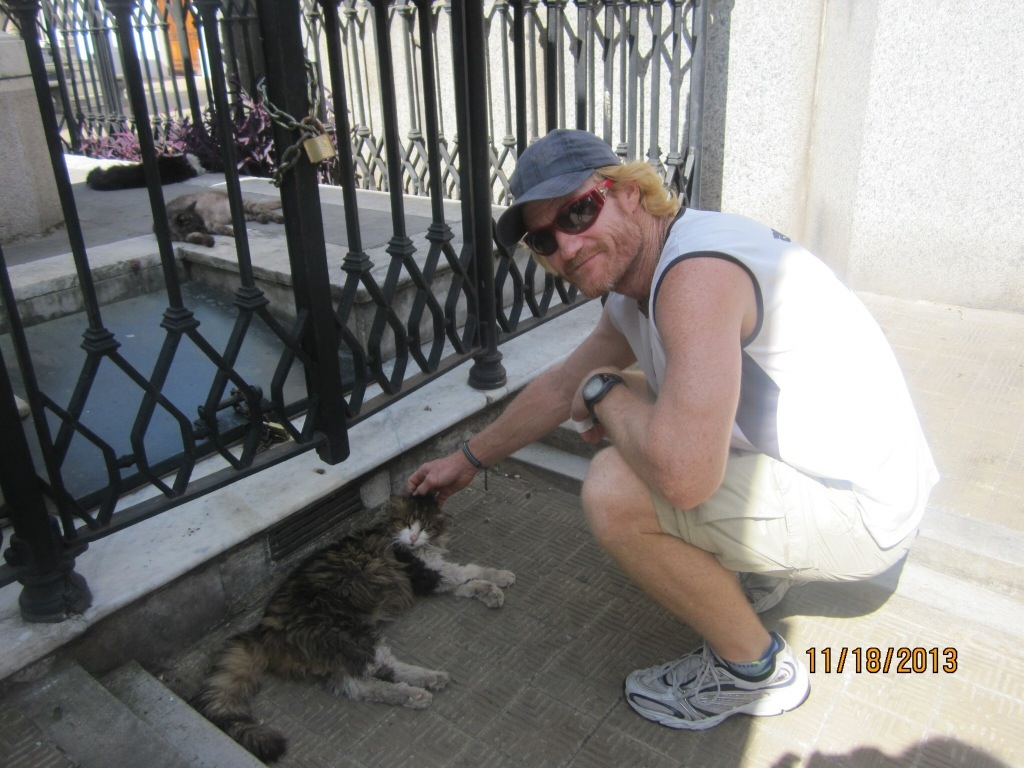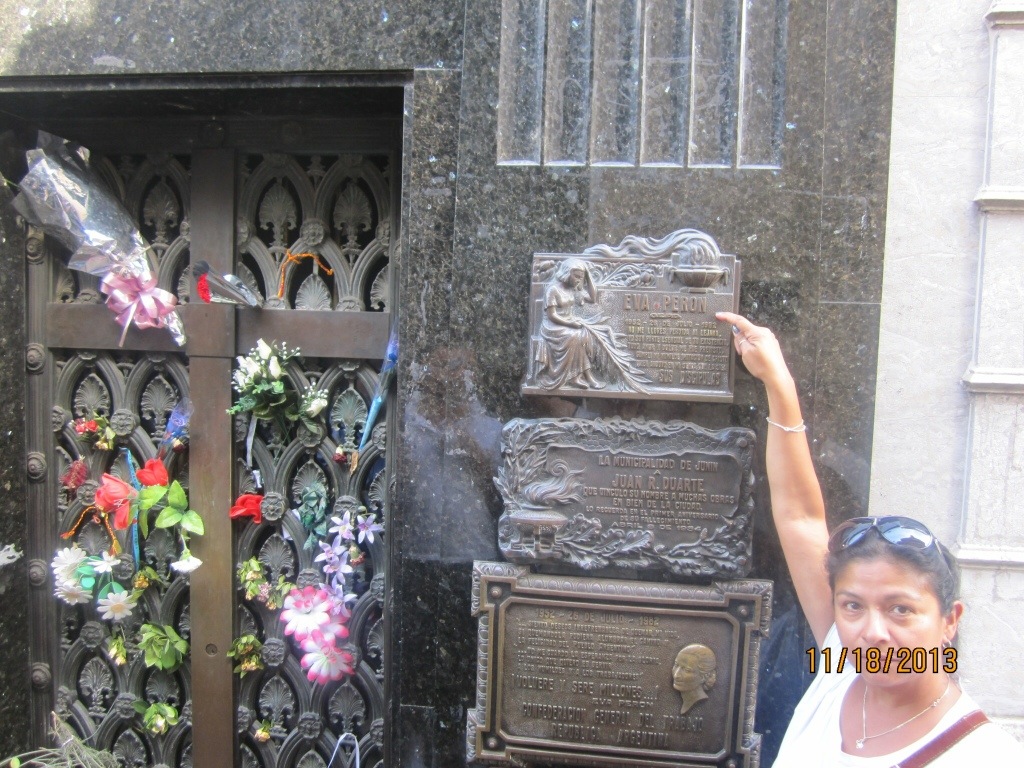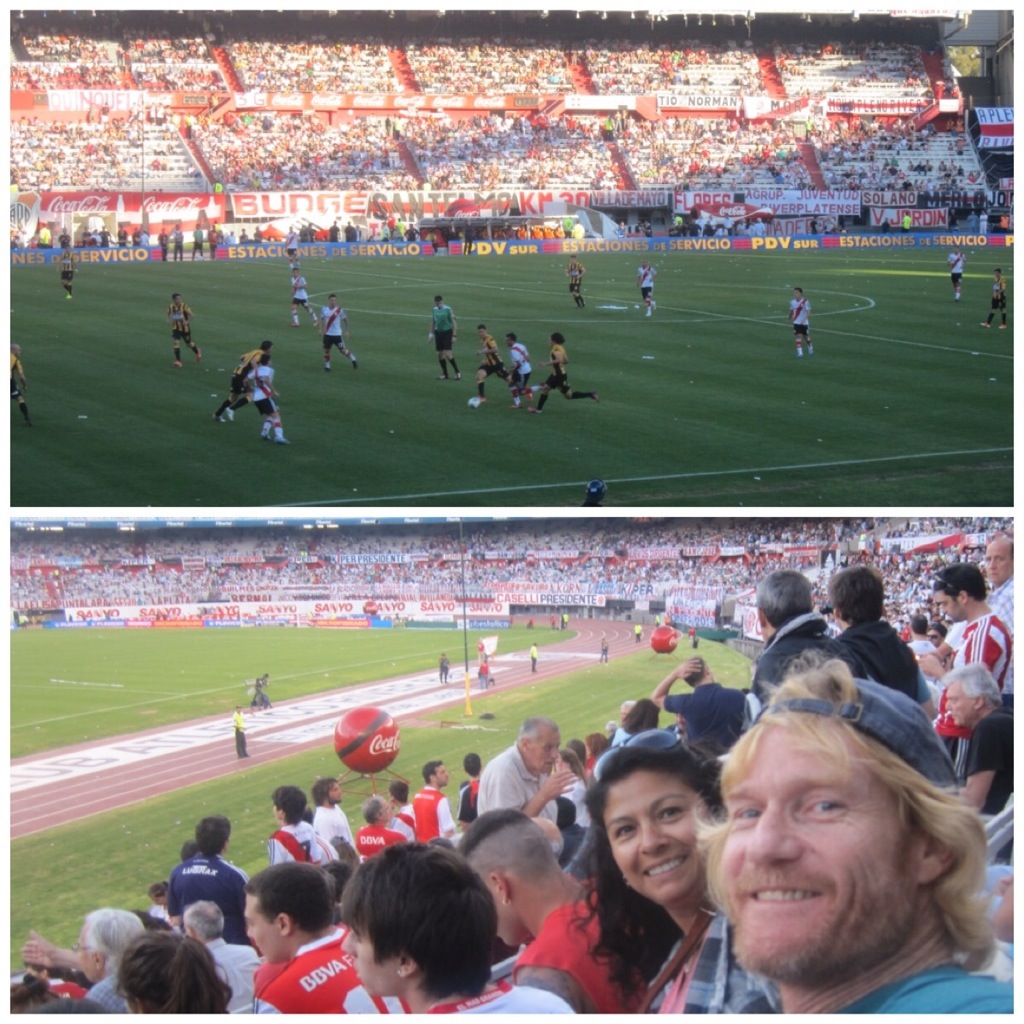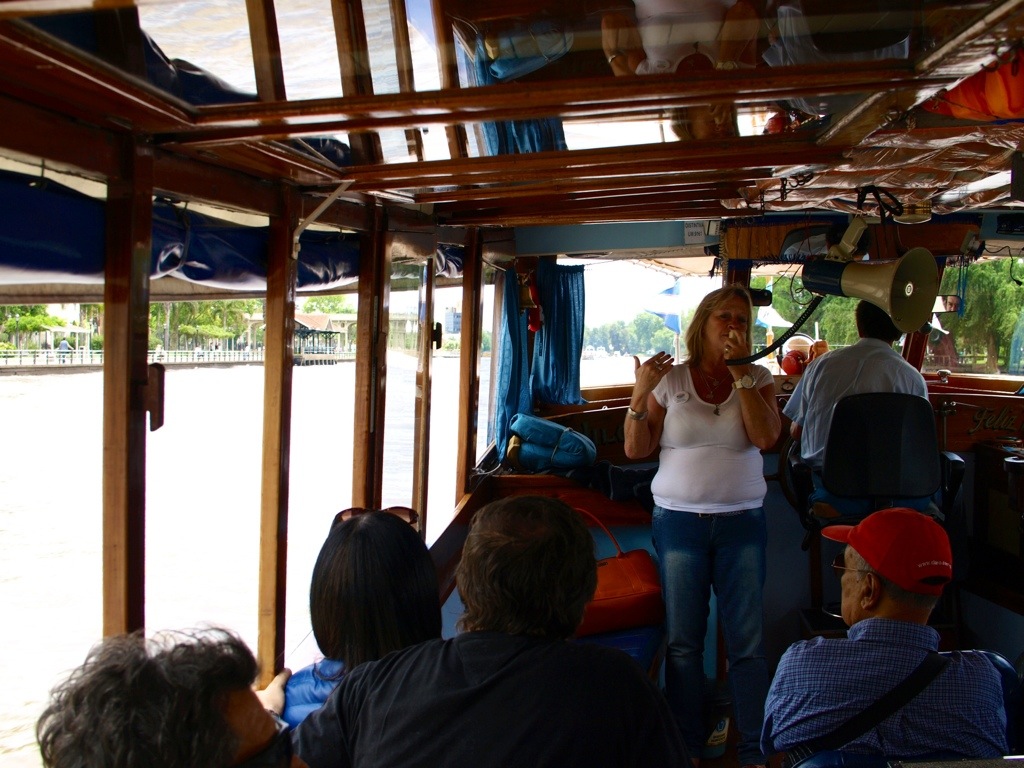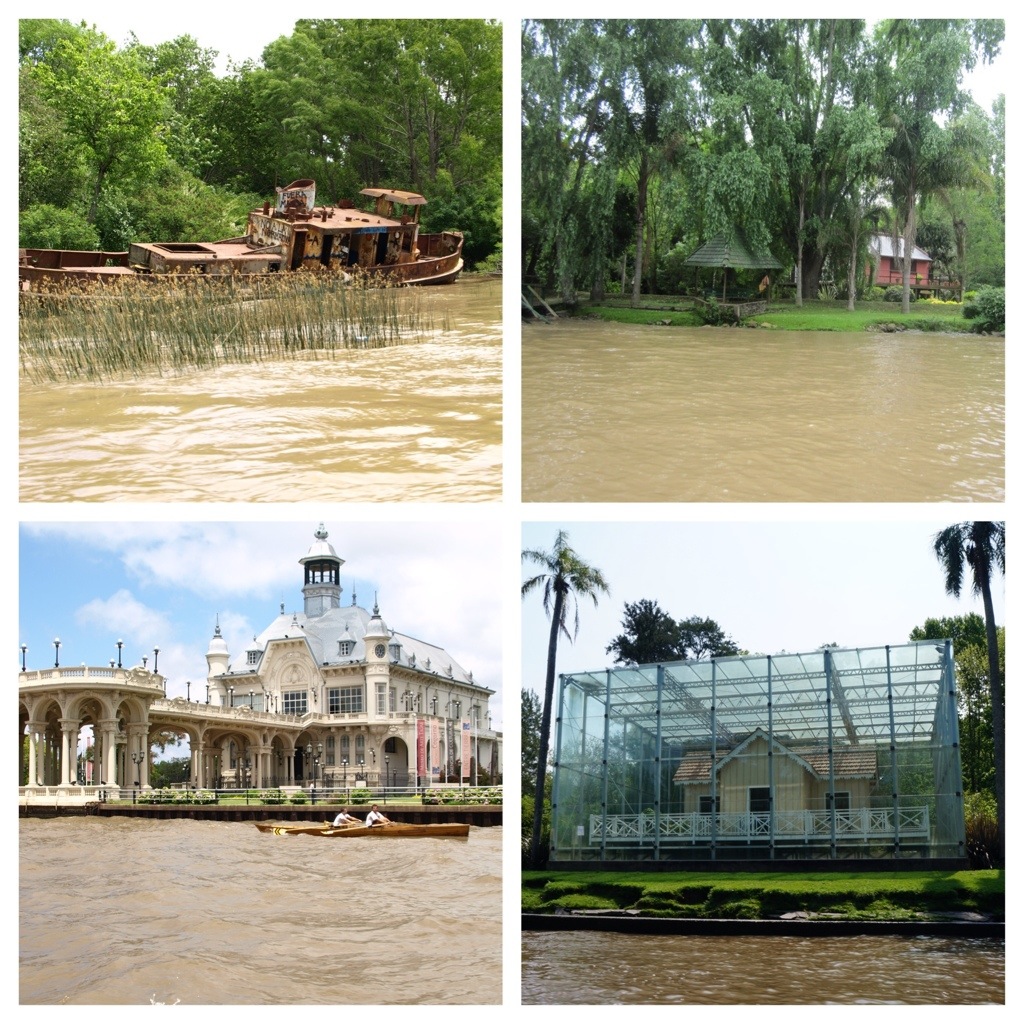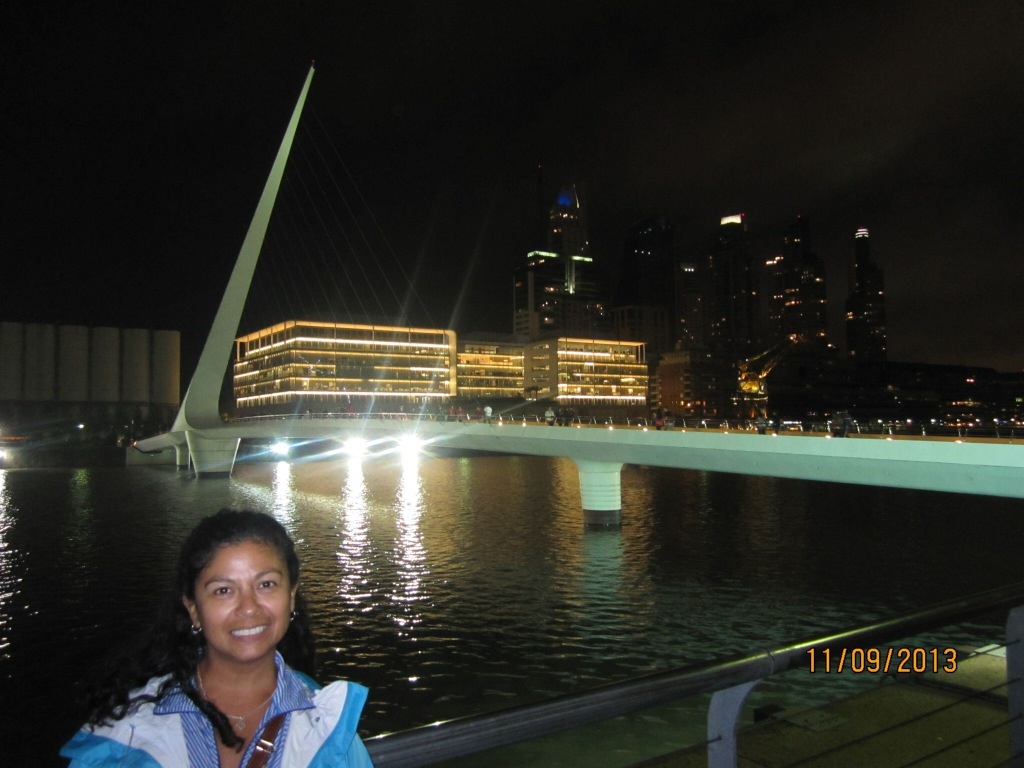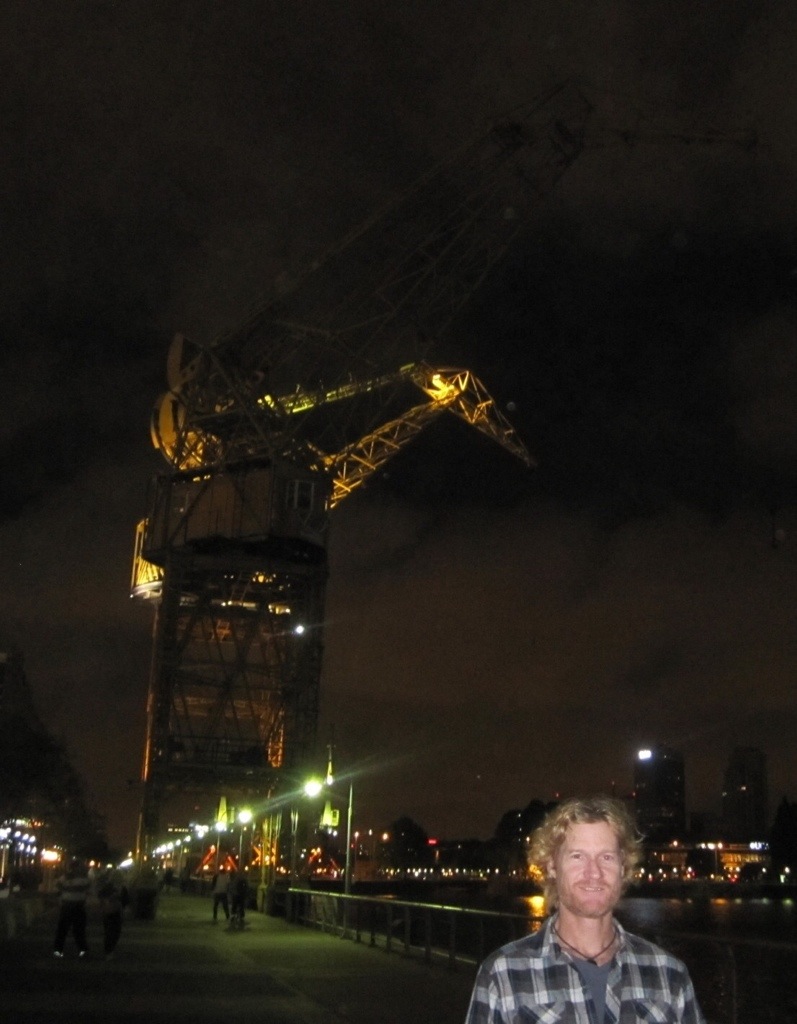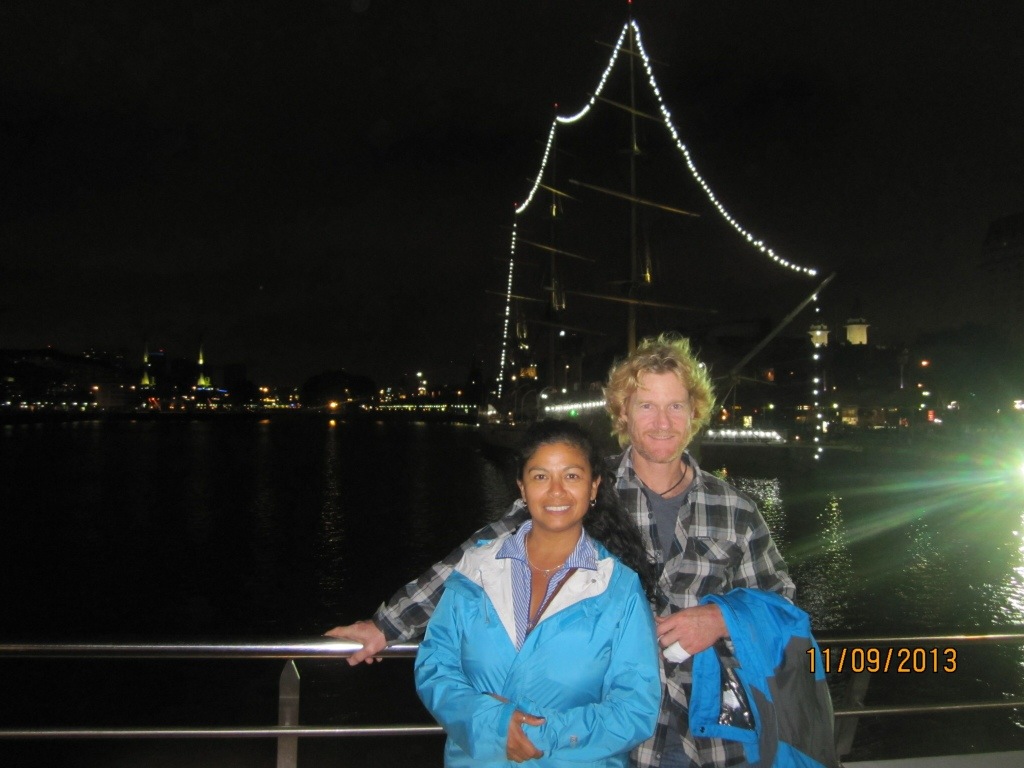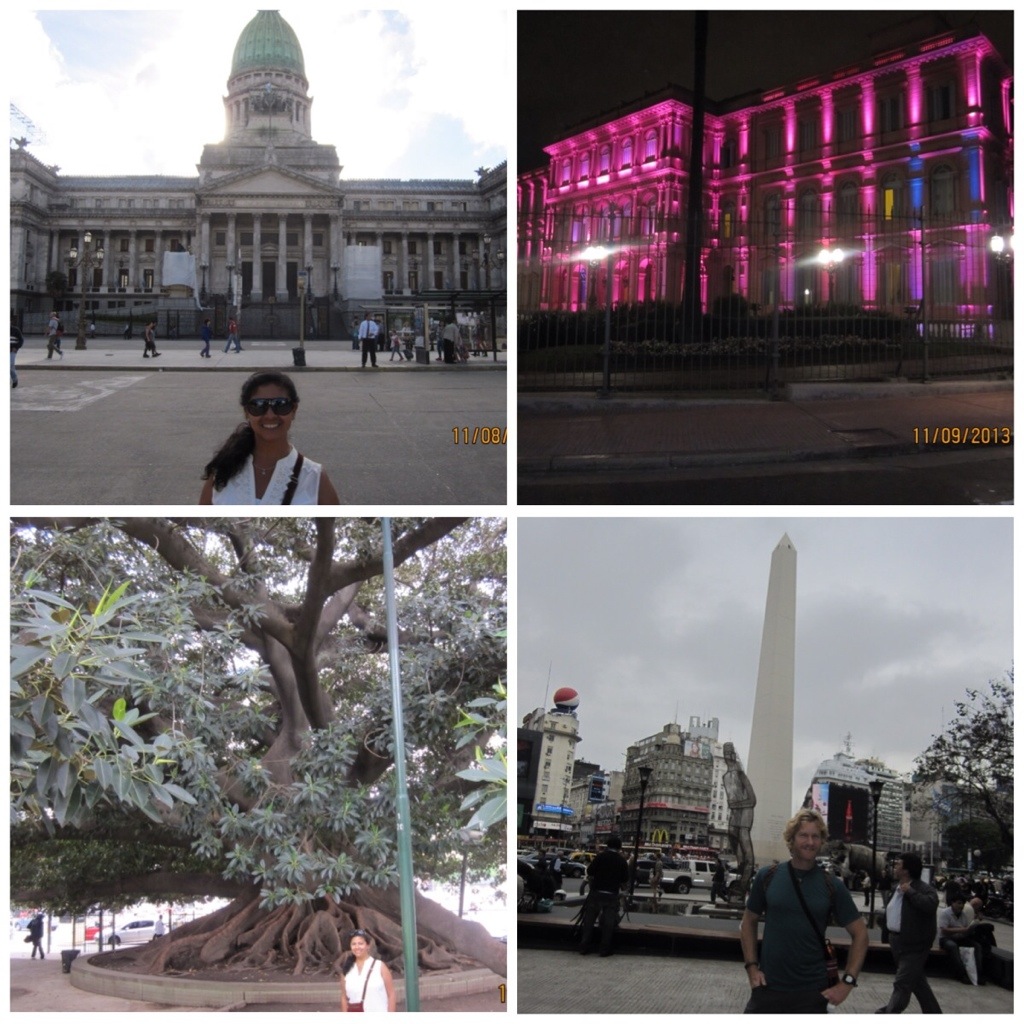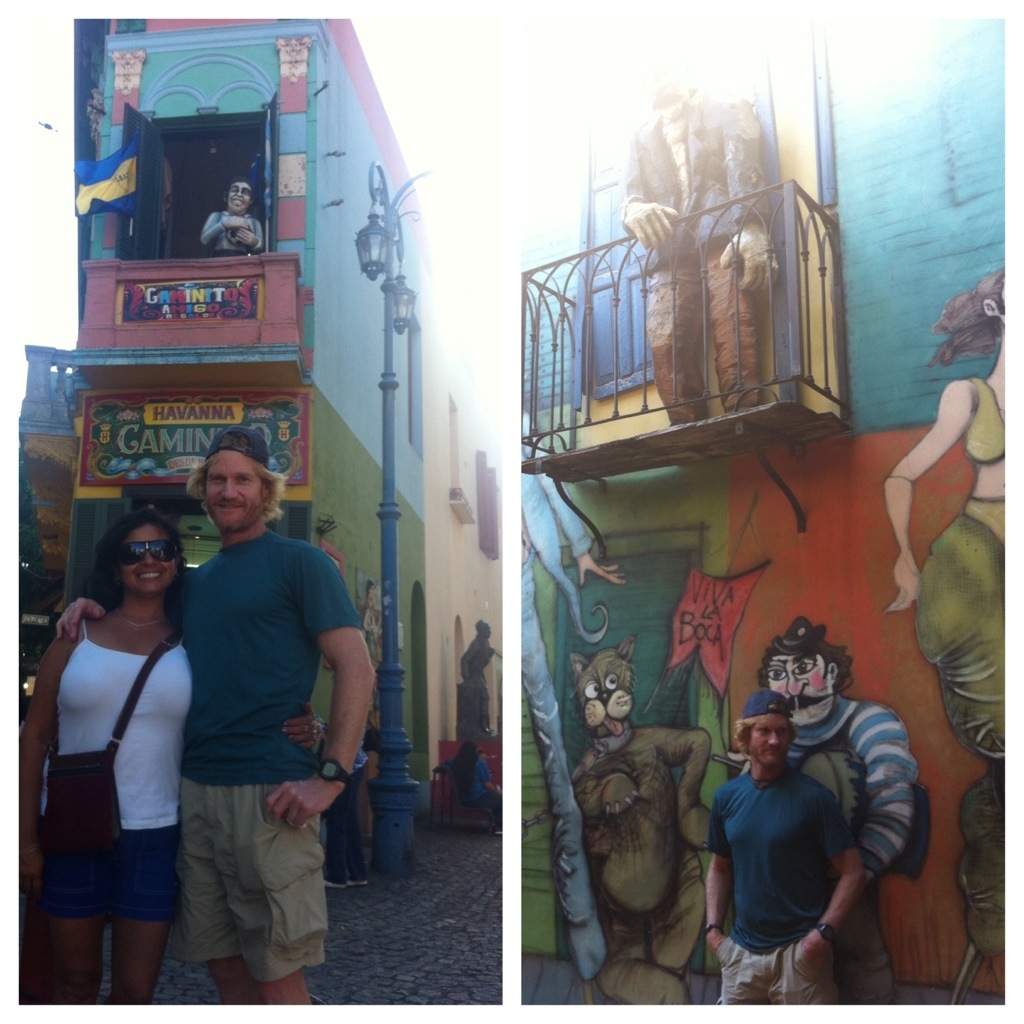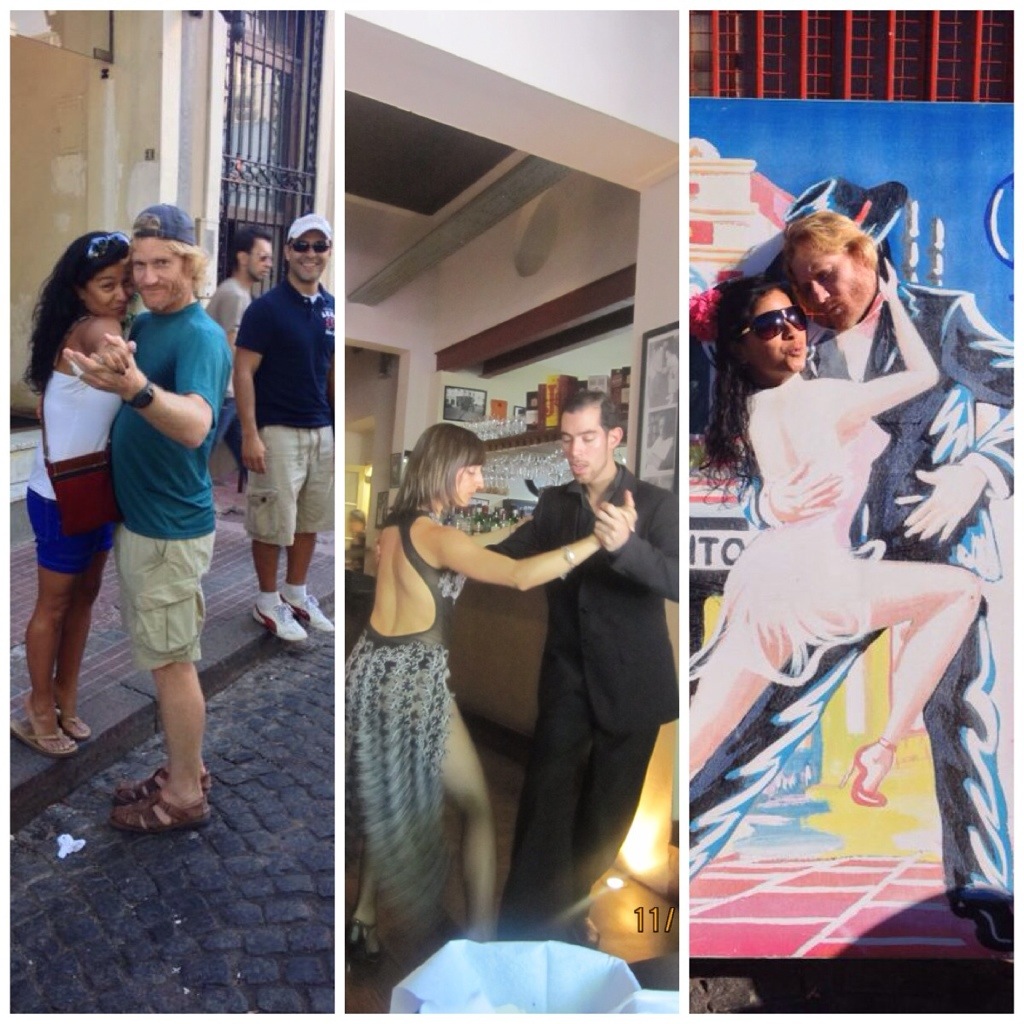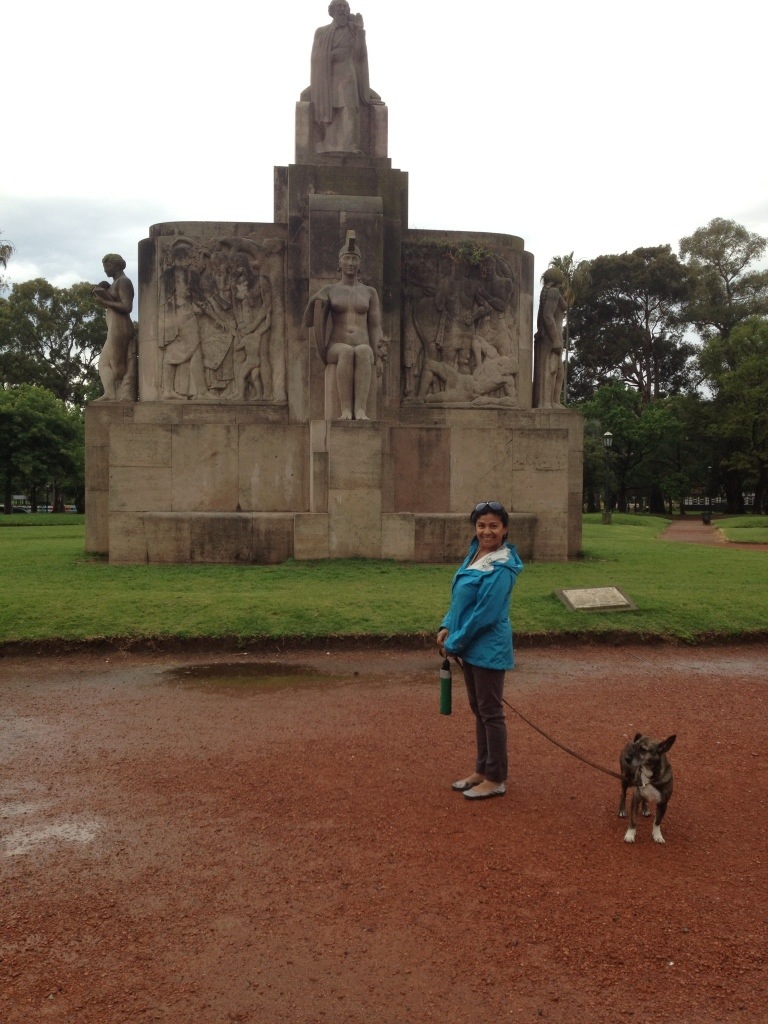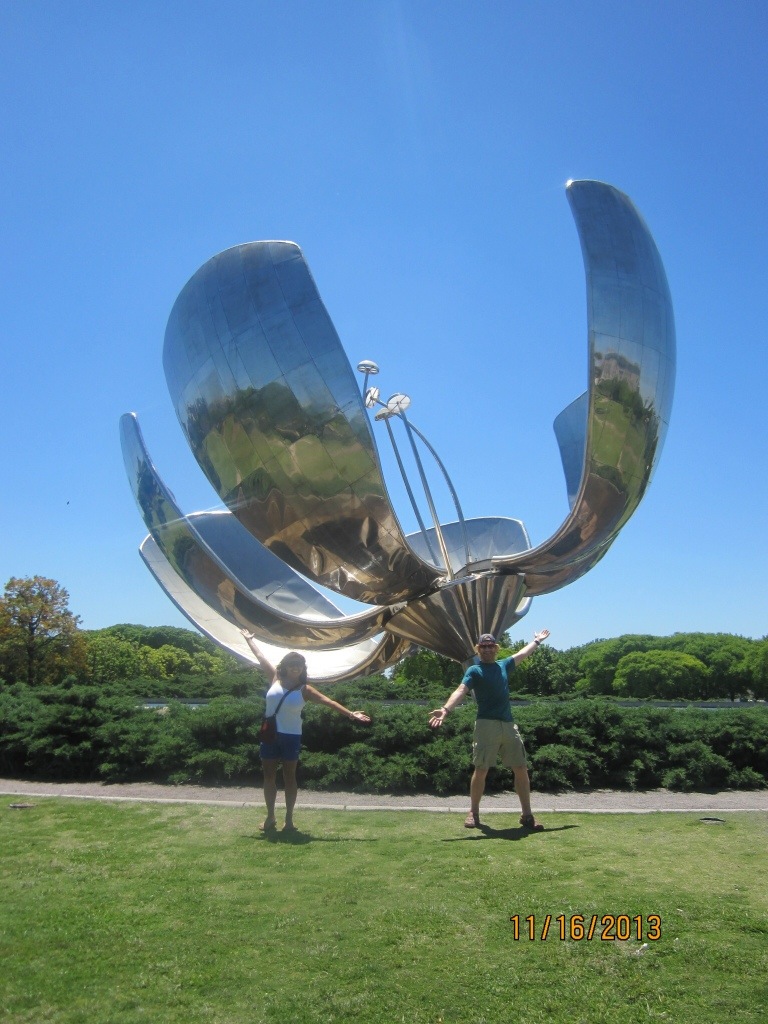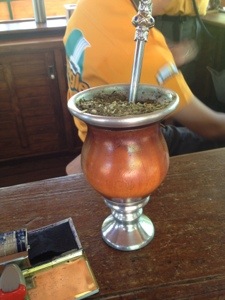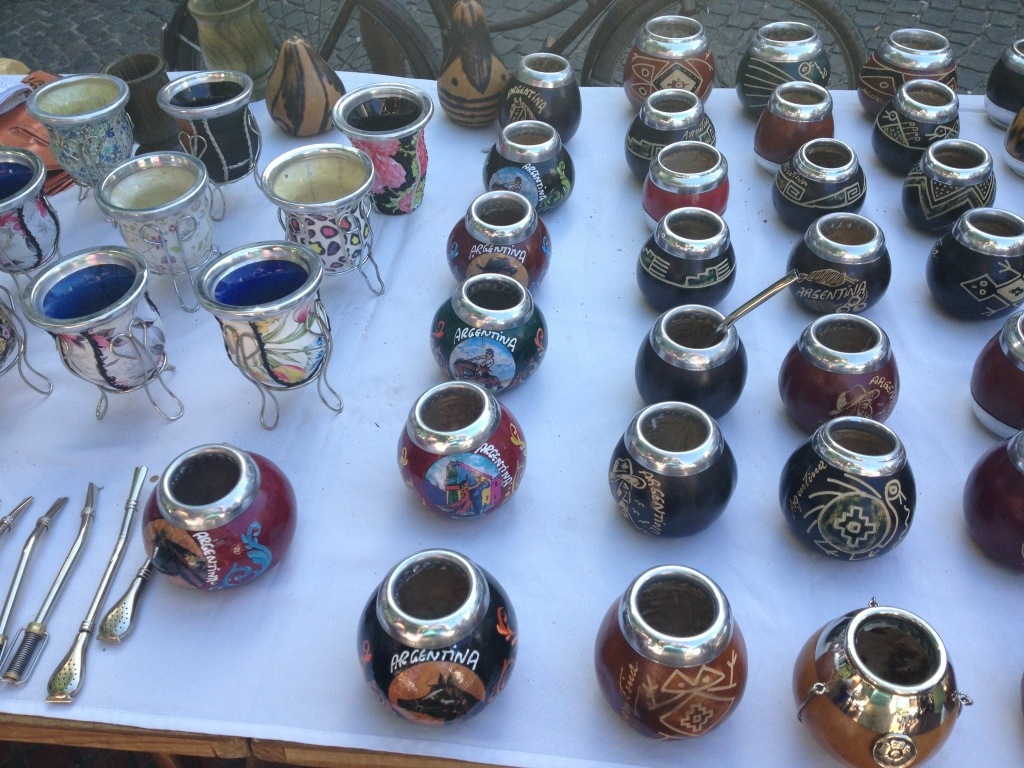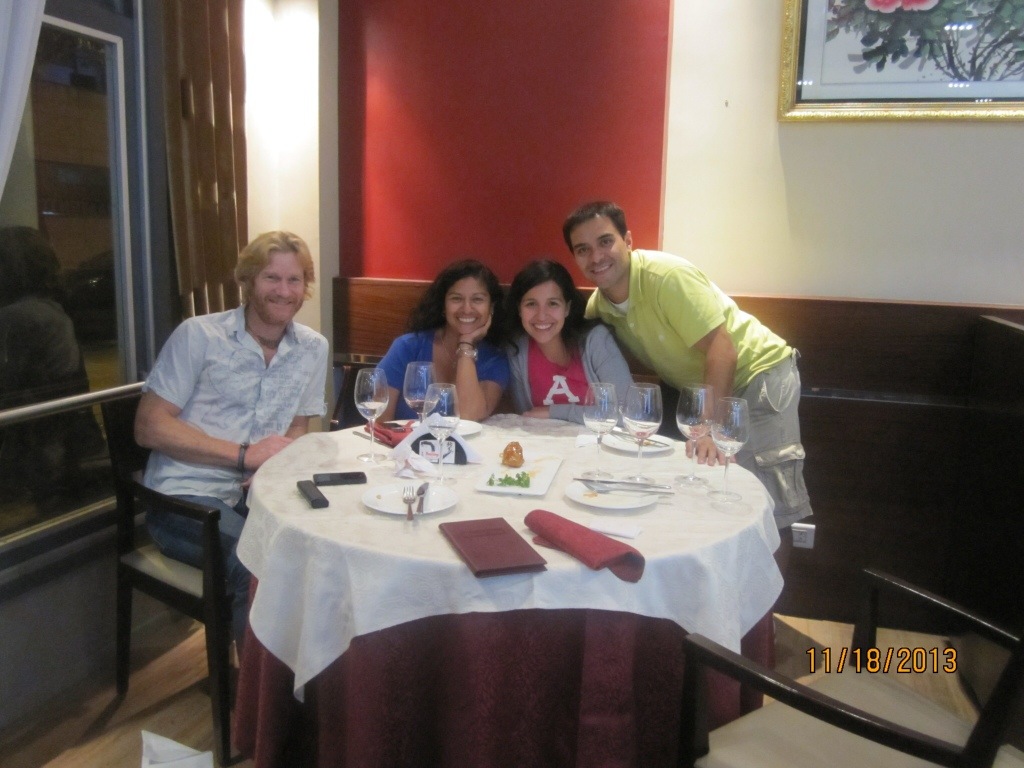(New Zealand – 27 December 2013) In one sense, boarding a plane and leaving South America for New Zealand was just another flight in our journey around the world. Psychologically, however, the shift was as large as the Pacific Ocean we were crossing. We hadn’t consciously divided up our trip into parts or phases, but concluding 4 months in Central and South America and heading to New Zealand/Australia certainly provided a natural partition. Coming to grips with the fact that one-third of our trip is now over was hard enough to wrap our minds around. Anticipating our next five countries… (New Zealand, Australia, Indonesia, Singapore and China) …equally as bewildering.
Our first introduction to New Zealand came in the form of Auckland, located on the northern end of the North Island. (New Zealand as a whole is made up of a chain of islands (much like Hawaii). The two main islands are simply referred to as the North and South islands.) We found Auckland to be very nice- clean streets, lots of flower-filled parks, and light traffic. The two most jarring things to us were the keep left roads and the high price of just about EVERYTHING.
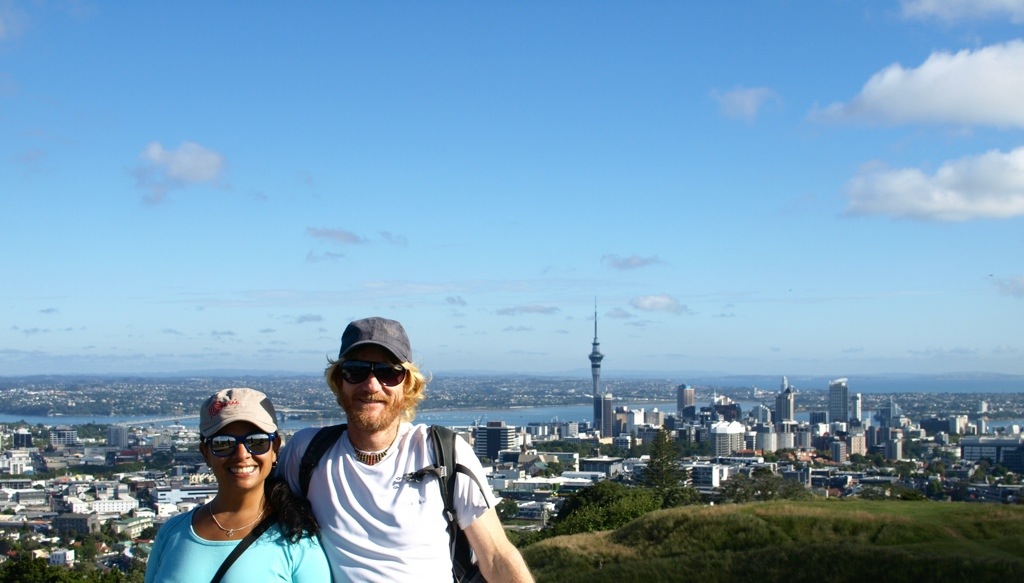
Delayed Flight for the Win
Travel mishaps often provide fodder for OMG stories involving multi-day delays, tarmac campouts, or airport sleep-overs, etc. The travel mishap story we have to tell is far happier. Our flight from Concepción, Chile to Sydney (the first of three stopovers on our way to Auckland, New Zealand) was delayed a few hours. The delay caused us to miss our first connection, so Quantas Airlines gave us the super sad news they’d be buying our lunch, AND putting us up in a Sydney hotel for the night. In addition, they gave us both $50 vouchers for food purchased at the hotel! Score!
Having stayed in a series of hostels (of wildly varying quality) practically every night since the beginning of our trip, the mere thought of staying in a nice hotel got us extremely excited. While not over-the-top fancy by any normal measure, the hotel felt like luxury to us. And then the buffet breakfast the next morning? Fugetaboutit! It was opulent. I swear they had 9 different kinds of bread, 10 different hot-plates, and more fruits and cereals than a grocery store. The cost of the buffet was $26 each, but Jessica and I used our vouchers and enjoyed the heck out of that spread for FREE.
The icing on the cake was that our reshuffled travel arrangements landed us into Auckland 8 hours earlier than our original flight plan. Thank you, Quantas! You can delay our flight anytime.
Keep Left
Up to this point, all of our travels had been on planes, trains, boats, taxis…and countless buses, but no rental cars. Our pattern might have continued still were it not for the high cost of bus travel in New Zealand. (South America, this ain’t!) The reason for renting a car was to see the glow worm caves located near Waitomo, an out-of-the-way town some 3 hours south and west of Auckland. That meant at least 6 hours of our day would be spent on the (left side of the) road, but we heard the glow worms caves were “mind blowing” so this meant seeing them regardless of cost or hardship.
It’s so weird driving on the left side of the road; a lifetime of “keep right” flipped on its bloody bum. Both Jessica and I were nervous as I drove away from the rental car place…and onto the left side of the road. One slip of attention and I could revert to my old keep right habits. Right turns were especially nerve-racking. Sweeping through an intersection to make a right turn just feels wrong.
I was also thrown off by the location of our rental car’s turn signal- on the right side of the steering wheel. Again and again, I turned on the windshield wipers by mistake…causing me to exclaim, “Dog-adee-doo!” (I’ve never been good at real swear words.)
Glow Worms- Like Nothing Else In This World
Our glow worm excursion included two cave treks. The first cave was more notable for its cool air and exquisite formations than for glow worms, though we did see some. Just points of faint green light on the ceiling of the cave. How can this be a worm? Further into the cave we saw more of them, and up close, too. That’s when our guide explained more about these strange creatures.
Jessica at the first cave’s entrance and while inside…
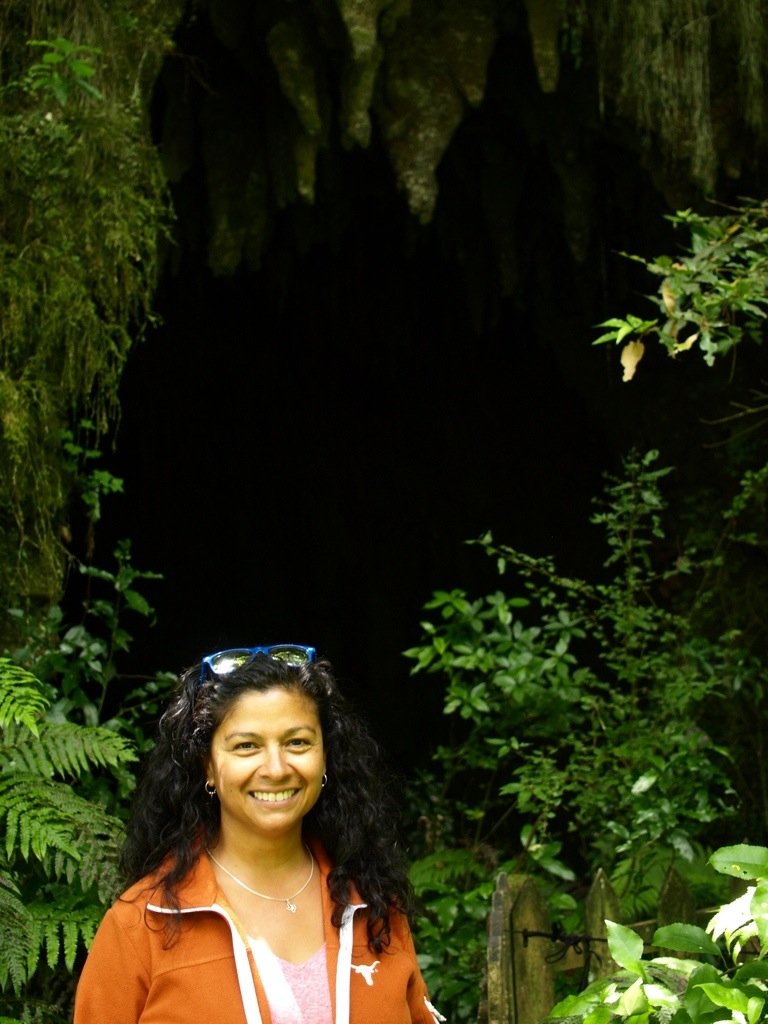
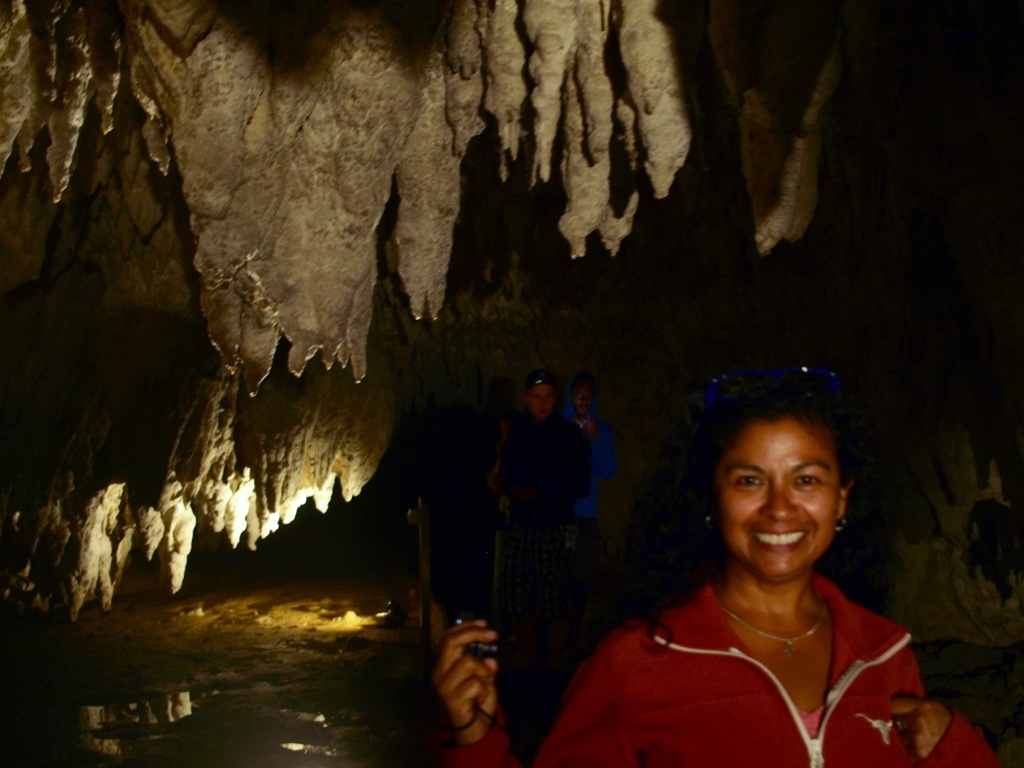
Only the tail of the glow worm does the glowing. The rest of the wiggly resembles a small thin brownish caterpillar and is about 1 1/2 inches long. Each worm stakes out a small bit of ceiling territory along favorable portions of the cave. 10 – 15 worm-spun sticky threads are lowered from each worm’s lair. Flying insects that happen through the dark cave will be drawn to the glowing light of the worm’s tail and then get hung-up in their threads. Bam! Mealtime. The glow worms are actually fly larvae and live as worms for almost a year before becoming flies (through metamorphosis). As flies they live only about 4 to 5 days. But in that time, they will have lots of sex. They don’t even have to stop for food since glow-worm flies have no stomachs.
The second cave we entered was a short, picturesque nature-walk from the first and that one turned out to be glow worm central. Just the right temperature, just the right humidity, air flow, bug flow…whatever it was, the glow worms were loving it. The jackpot was a stretch of cave flooded by water. To see it, our group of seven (six tourists plus the guide) took seats in a small inflatable raft already docked inside the cave. We were asked to turn off all headlamps, flashlights and cameras; total darkness was needed to allow our eyes to fully adjust to the conditions. Below is one last pic in the raft before lights out.
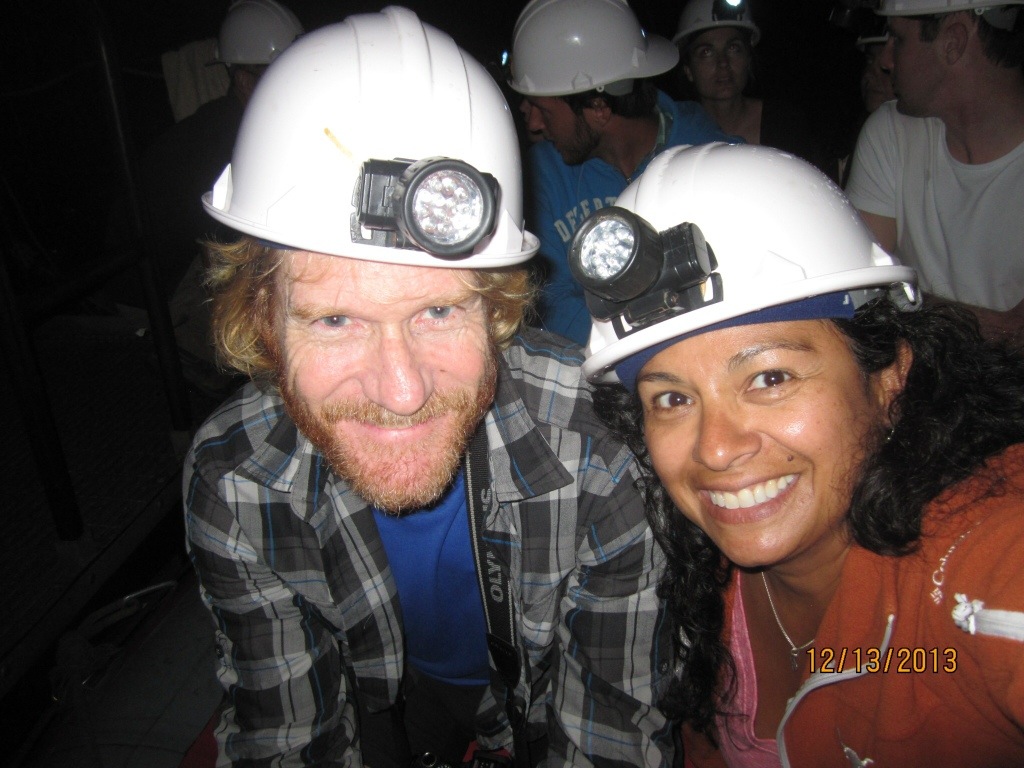
Not a soul spoke as we drifted through the cave tunnel, heads gazing upwards in amazement. Hundreds of thousands of greenish glowing points of light illuminated our “sky.” Some glow worms shined more brightly than others, just like the stars. Unlike stars, there was no twinkle; these points of light glowed steady and strong. The whole scene was magical to the point of questioning, is this real?.
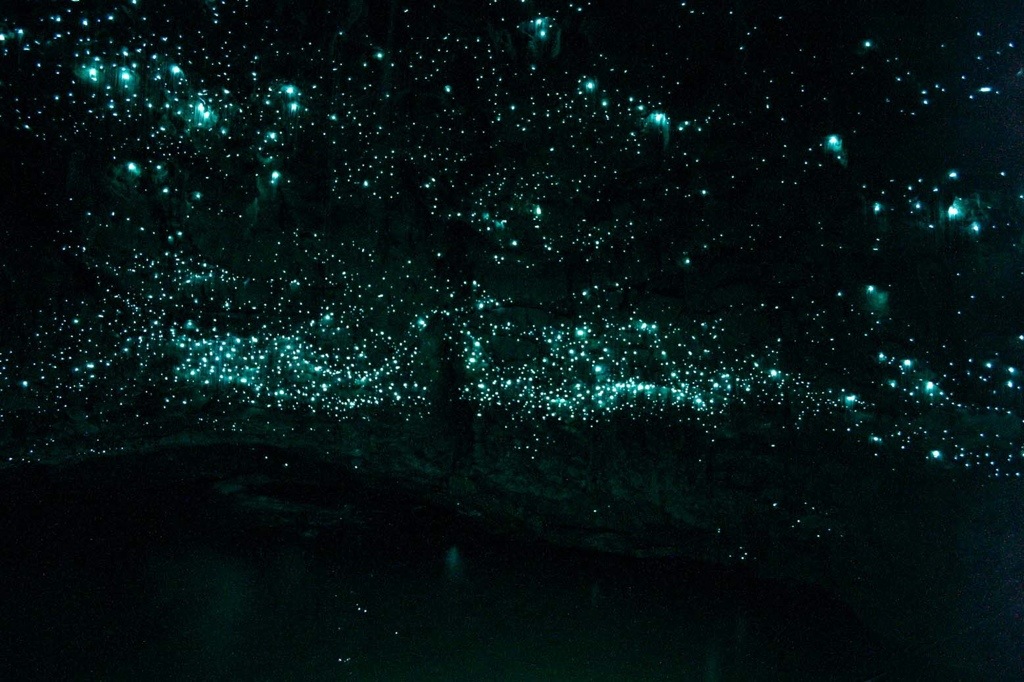
Our raft slowly floated only a short distance before turning around in place. The white-noise of flowing water within the cave was getting louder and turning back felt nice. Our guide controlled the boat by walking his hands along on a rope strung over our heads, a silent method that allowed our minds to drift, float and wander undisturbed. Back upstream we floated, still gazing in awe, to the dock where we started and then a few meters beyond. The eerie river of glow worms overhead appeared endless. Our guide spoke just a few times, once asking us to notice how much more our eyes had adjusted to the light. It was true, after additional minutes had passed we could not only see more glow worms, but we could see just how much their collective light illuminated all of our surroundings. The experience lived up to the hype; it was indeed mind-blowing.
A close-up that shows the sticky threads.

Boris and the New Zealand Whirlwind
From the day Jessica and I announced our plans to travel the world for a year, we let all of our family and friends know how thrilled we would be if any of them (any of you) were to meet up with us somewhere along our journey. The first person to take us up on that invitation was our very good friend, Boris. Even if you haven’t met him in person, surely you’ve heard of his grand exploits. Boris is the Italian friend that I met in Austin in 2004 while (we were both) training for the Austin Marathon. He was in Austin for 10 months during that time to do research at UT as part of an exchange program connected to his PhD studies. All good stuff, but that’s just boring background for his real claim to fame. In 2010, Boris spent an entire year living and working at a research base in Antarctica. Yes, that frozen white continent on the bottom of the globe. Below is the quintessential “Boris in Antarctica” photo.
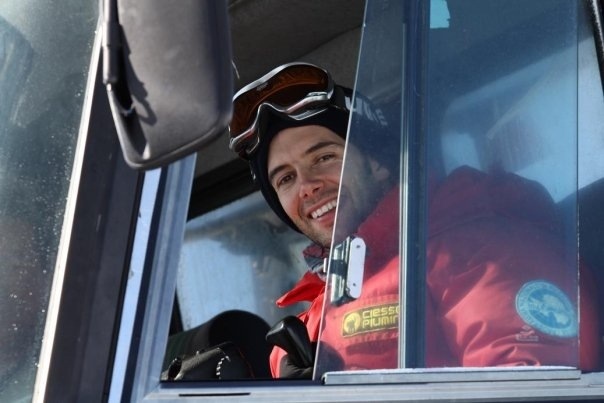
It was at the Auckland airport that we united with Boris and his Chinese girlfriend, Yufang. From there the four of us flew to Christchurch on the South Island to begin where all of our time together would be spent. From Christchurch on the east coast, we crossed New Zealand to the west by rental car and spent our first night in Franz Josef, (home of the Franz Josef glacier). This was the first arc of would be an awkwardly shaped counter-clockwise loop of New Zealand’s south island. The loop included stops at the Fox Glacier (up the road from Franz Josef), a sleepover in Haast, two nights in the uber-charming city of Queenstown, another two on the lip of Milford Sound, a night in Dunedin- where we stumbled upon the steepest street in the world (Baldwin Street), Oamaru- home of the yellow-eyed and blue penguins, Lake Tekapu- where we spent Christmas Eve and Christmas. The final swing of our loop took us back northward to Christchurch, where we visited the Antarctic Center. With the exception of the moderately famous Milford Sound, none of these place-names are likely to mean much of anything to you. Nevertheless, I wanted to put them down for my own memory’s sake. It was a bit of a whirlwind, really.
About New Zealand….well, it’s beautiful. The whole country looks manicured like a golf course. Must be those 36 million lawn-munching sheep keeping things tidy. We saw expansive meadows filled with happy sheep nearly everywhere we went.
Typical roadside scenery. (Yes, each white dot is a sheep.)
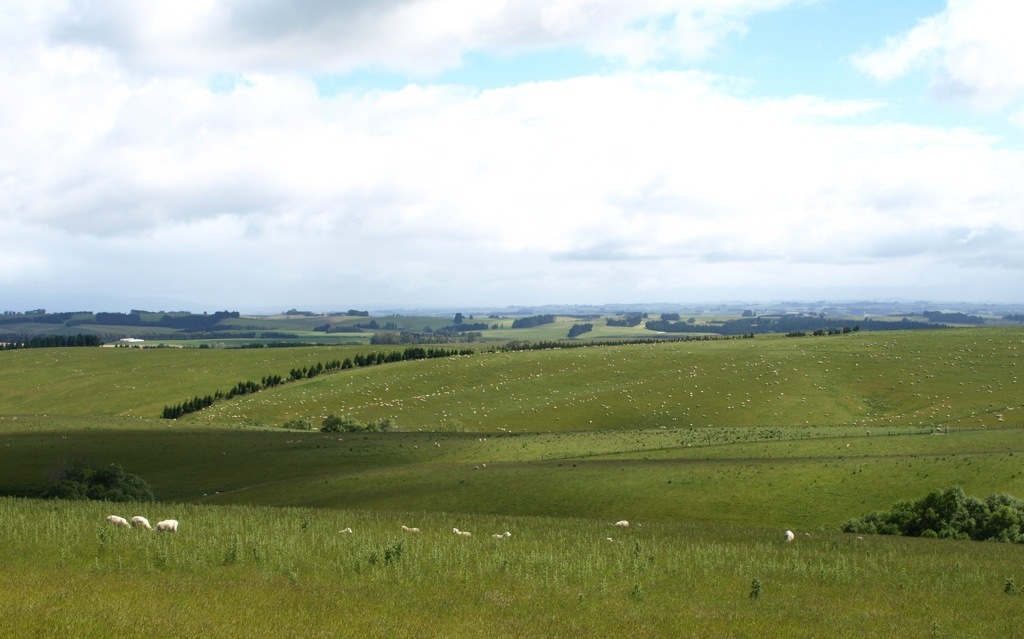
We saw zero sheep when we hiked the Fox Glacier. There are three groups of hikers already on the glacier as we approached. Spotting them will help you capture the enormous size of it. (Click on any photo to view it full size)
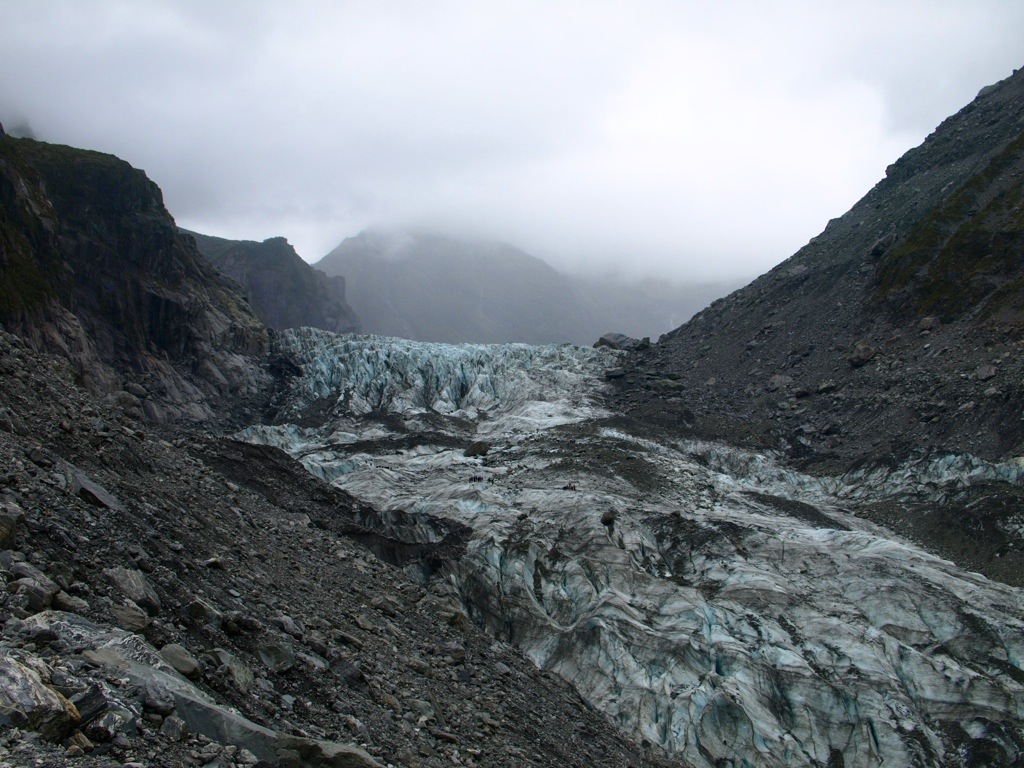
Walking on a block of ice was a cool experience. It wasn’t a particularly cold day, but once you step out onto the glacier it’s like opening the door to the freezer and climbing inside.
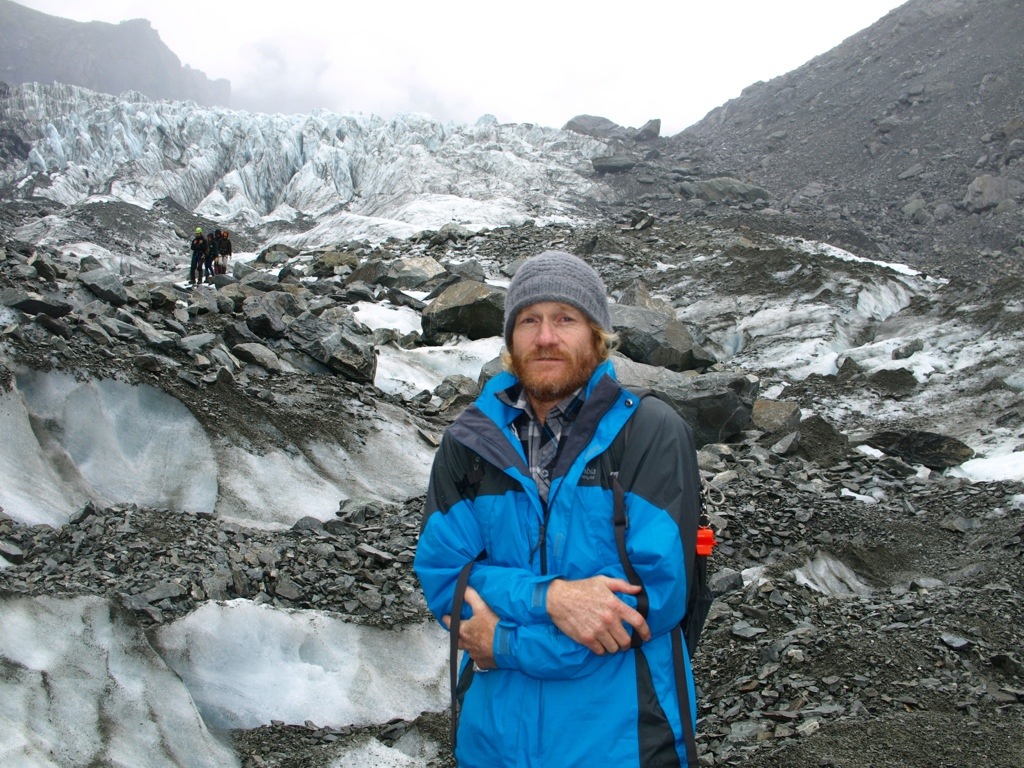
Wear your crampons, friend. You wouldn’t want to slip and fall down a crevasse.
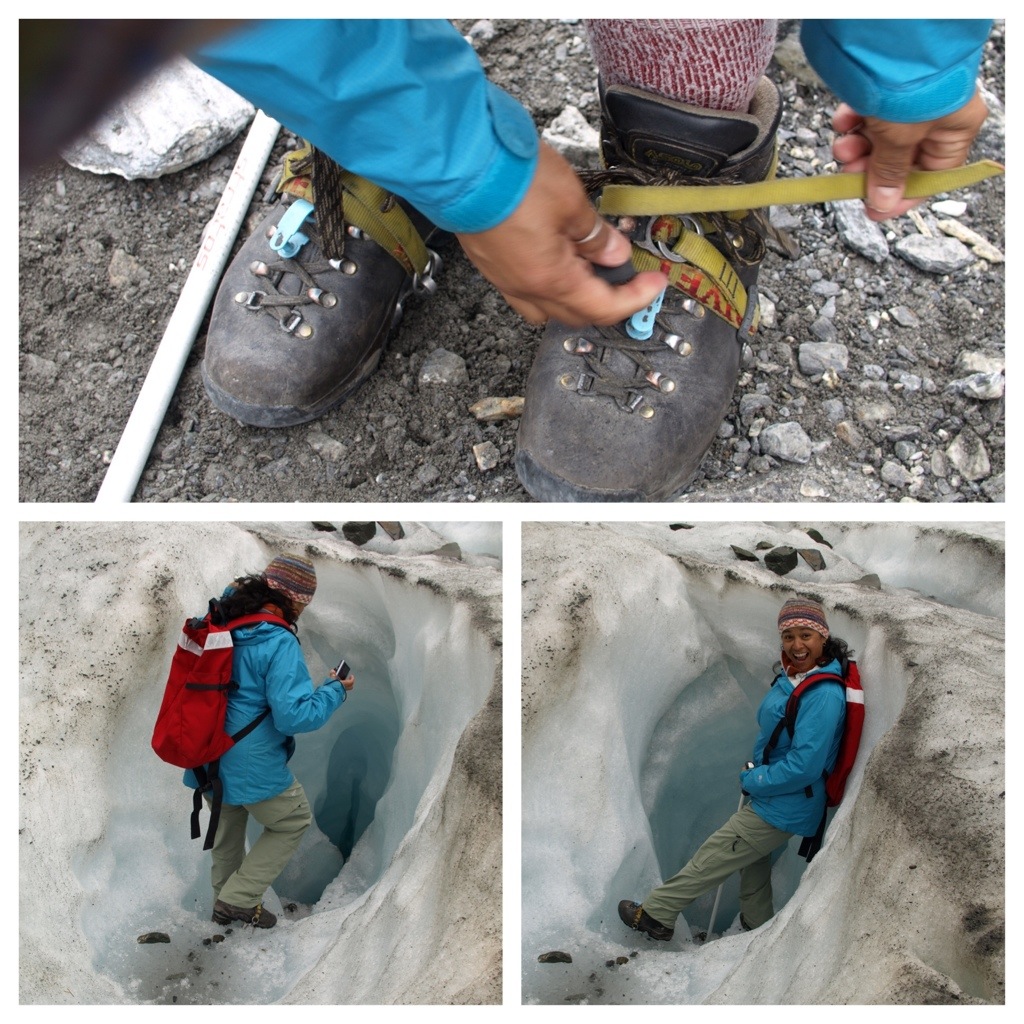
The glacier carries tons of rocks with it as it slowly flows down the mountain…at a rate of about 1 1/2 meters per day. Like almost all of the world’s glaciers, this one is melting fast. It’s flowing down hill, but shrinking at the same time at an even faster rate. The result is that the glacier “retreats” all the while technically moving forward. Our guide showed us where it ended just a few years ago- about where we are standing in the second photo. The foot of the glacier as it currently resides is seen in the distance. The river of glacier melt flows past us in the foreground.
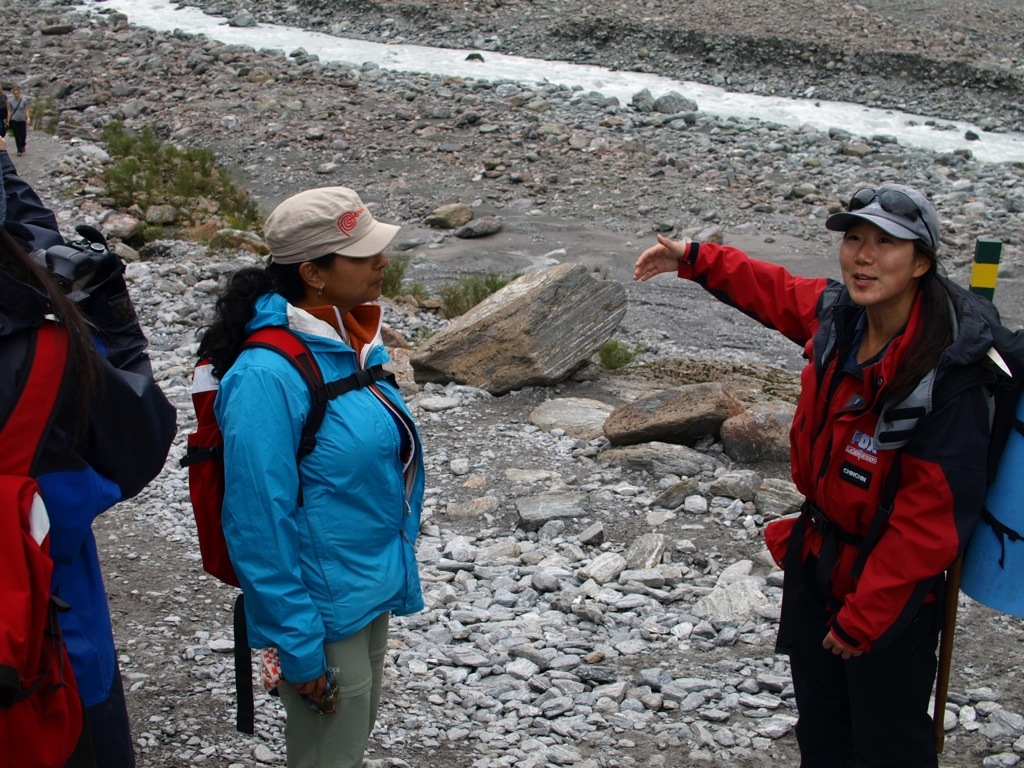
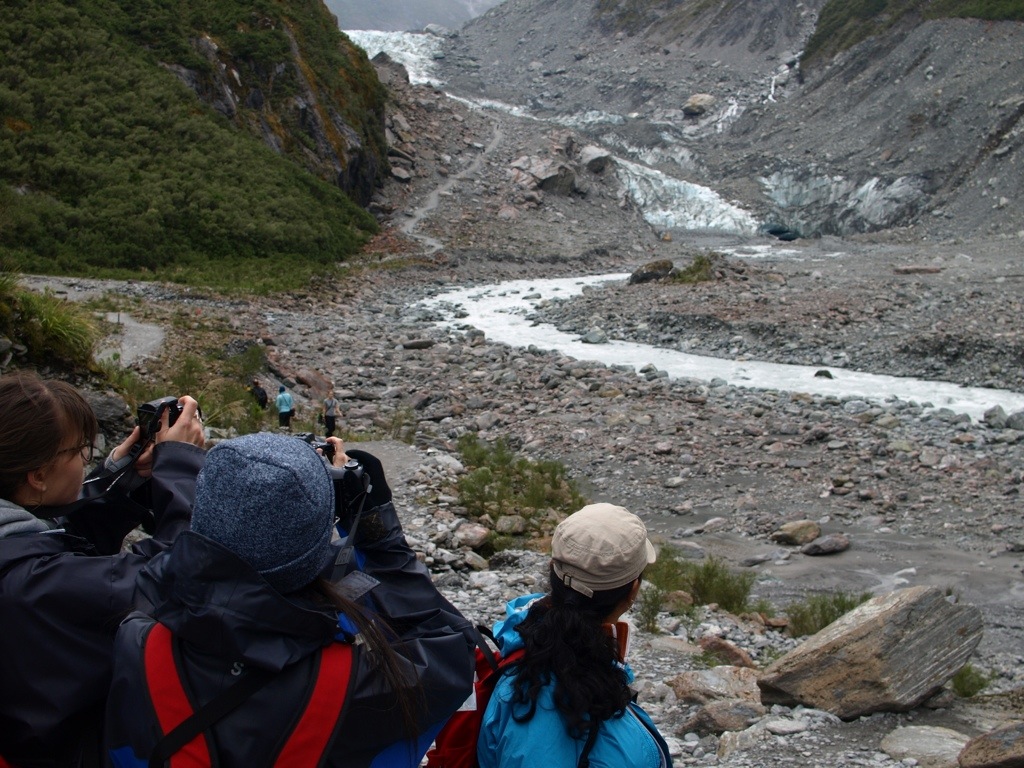
Ice vid from the glacier hike:
Milford Sound or Milford Fjord?
We visited the famous Milford Sound on two consecutive days. On the first day we arrived in the afternoon after driving towards our goal at a deliberately lazy pace, stopping for many worthy sites along the way- Mirror Lake, The Chasm Walk, Homer Tunnel, and more. We were in no particular hurry anyway. Once we arrived, the weather was superb and the waters of the sound shimmered beautifully. Though too late in the day to do much except ooh and ahh over the scene before us, we scoped out the plan for our return the following morning.
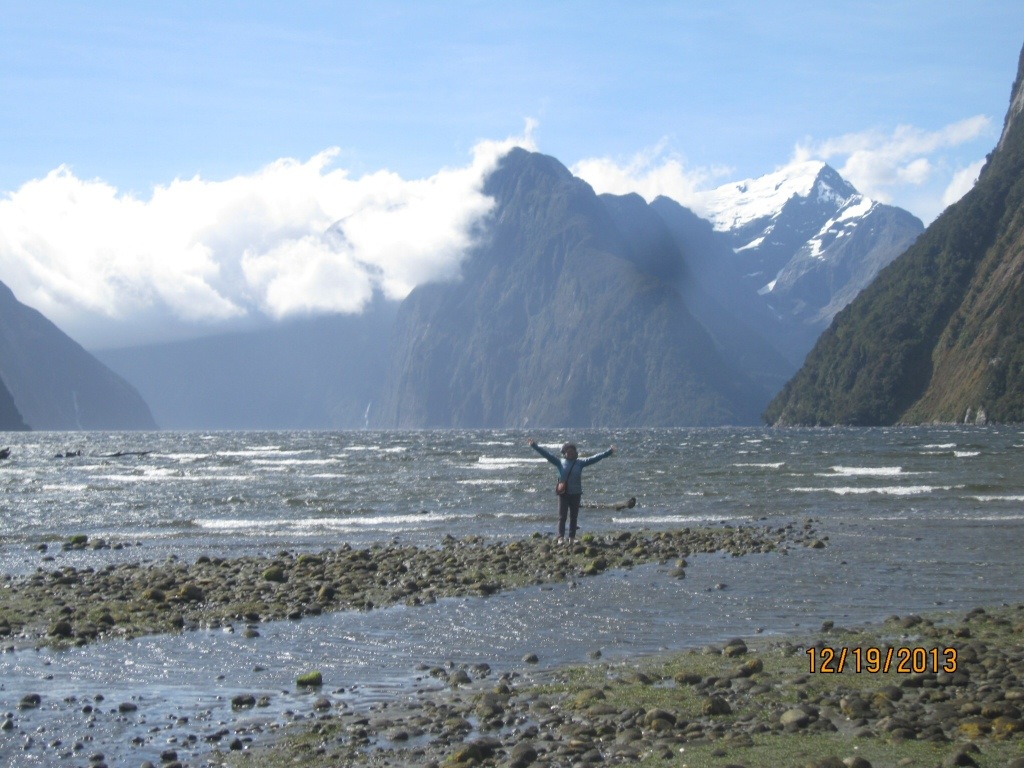
What is Milford Sound? First of all, it’s not actually a “Sound” at all, it’s a fjord, and, thus, inaccurately named. A fjord is created when a glacier flows out of a mountain range and into a neighboring sea, carving out a big trench as it inches along. Then, upon the glacier’s retreat, sea water follows inland behind its surrender. A sound can look geologically similar, but is not created by a glacier.
A 9 am boat cruise through the fjord was agreed upon despite the weather forecast that said overnight rains were virtually assured. The upside was that a good rain meant thousands of temporary waterfalls would streak down the mountains carrying rainwater into the fjord. How true this was! That next morning we saw waterfalls out the wazoo. The mountains lining Milford Sound are steep and high and the rains streamed down from on high like icing on a bundt cake.
A quick look at the water streamers before dashing into the Homer Tunnel.
$14 for a Hamburger?!
I mentioned earlier that New Zealand is expensive. The “land of thieves,” Boris liked to call it. He warned us that Australia would be that way, too. For this reason, we ate out only occasionally and mostly bought food at local grocery stores to cook in the hostels. Even that wasn’t cheap, but far less costly than eating out. We did “splurge” every so often. For example, we stopped for lunch in a small town called Wanaka. After walking the main street for a couple of blocks we decided on a place with burgers and chips (“chips” are what they call french fries). $14 was the cost of a basic burger. And it’s not like we stopped at a fancy joint, either. It was just a regular little burger hut. Want a drink with your meal? That’ll be another $4.
On another occasion we ate lunch at Wendy’s. (Yes, they have them here. Not many, but a few.) Our tab for two lunch combo meals was $24.
Prices like this quickly change the conversation when discussing things to do. The Lord Of The Rings trilogy was filmed in New Zealand and consequently LOTR tourism is understandably a big thing around here. But the prices of the excursions are insane. The complete movie set of the Hobbit’s shire (called Hobbiton) is available for tours and Jessica was itching for a visit. That itch went unscratched, however, once she saw the tour’s $124 price tag.
Internet access is costly here, as well. We’d become accustomed to free internet everywhere throughout South America. In New Z we had to pay various different annoying fees every time we wanted online and each hostel had their own unique method of robbing. Examples: $4 for 200 MB of data, $1 per 15 minutes, $5 per day. Not fast connections, either. This is one of the reasons this post has trailed the last by several weeks.
Christmas at Lake Tekapu
New Zealand is overrun with beautiful places; stunning views that are hard to look away from. Rarely, however, are the hostels where we stay located in the premium spots. The front row seats are typically occupied by the richy-rich hotels. To our delight, this was not true in the case of our hostel at Lake Tekapu. The view from the hostel’s common area:
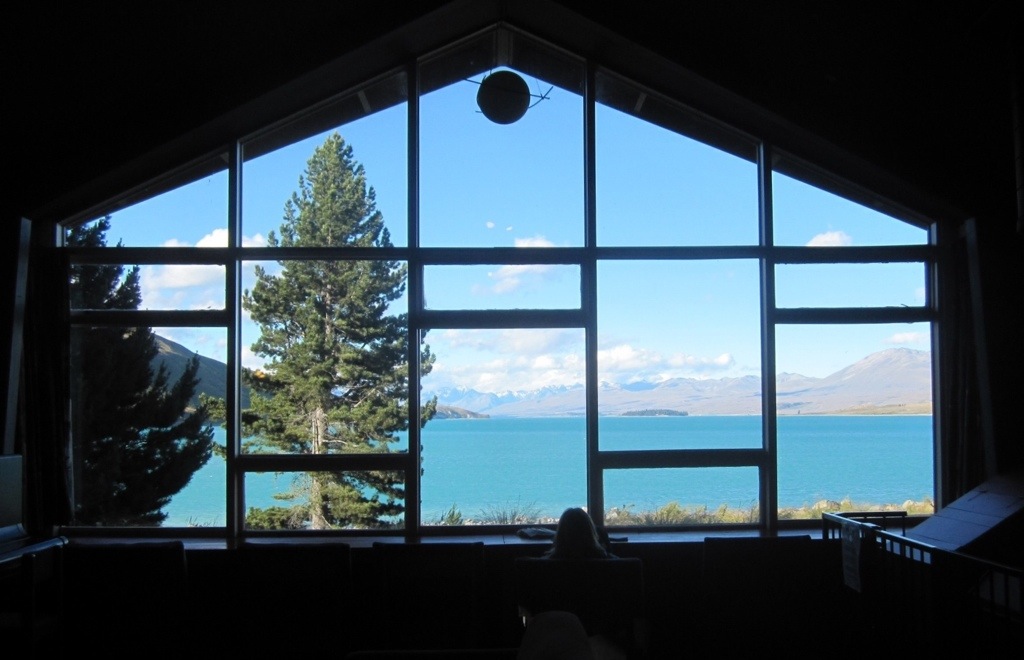
Christmas so far from home was different to say the least. We found the typical symbols of Christmas here and there (ie, Santa Claus, Christmas trees and lights), but being a home with family would be an irreplaceable missing element this year. Adding to the sense of apartness was the fact that our Christmas occurred a day ahead of all our family and friends back home.
Though our Christmas wasn’t very Christmas-like in many respects, we did walk over to Lake Tekapu’s lone church on Christmas Eve to hear a few awkwardly sung carols. The church was miniature in size and even though we arrived early there was no more room inside. We stood patiently just outside the door (in the cold-blowing wind) and waited for the service to begin. Yufang, Boris’ girlfriend and the one person in our group with no trace of Christianity in their background, managed to slip inside the Church and find a sliver of a seat right there in the front pew. She had made her move quietly- like a ninja -and we didn’t know where she was for the longest time. Only after Jessica circled-around to the opposite side of the church and spotted her through the picture-window- pretending to sing along, lyric-pamphlet in hand -did we realize where she had gone.
I’m not much for God, church or religion, but visiting that quaint little church on Christmas Eve wan’t awful.
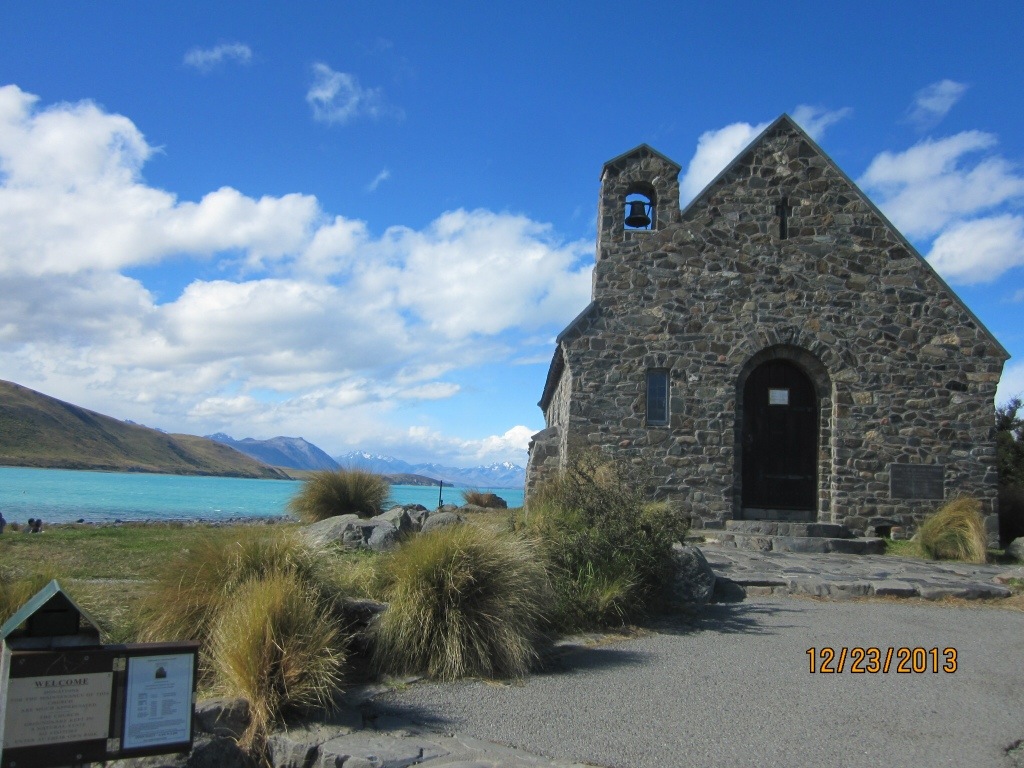
Pics from Additional Stops Along Our Route
Moeraki Boulders
A fun stop to see the curiously round Moeraki Boulders near Oamaru. So very odd!
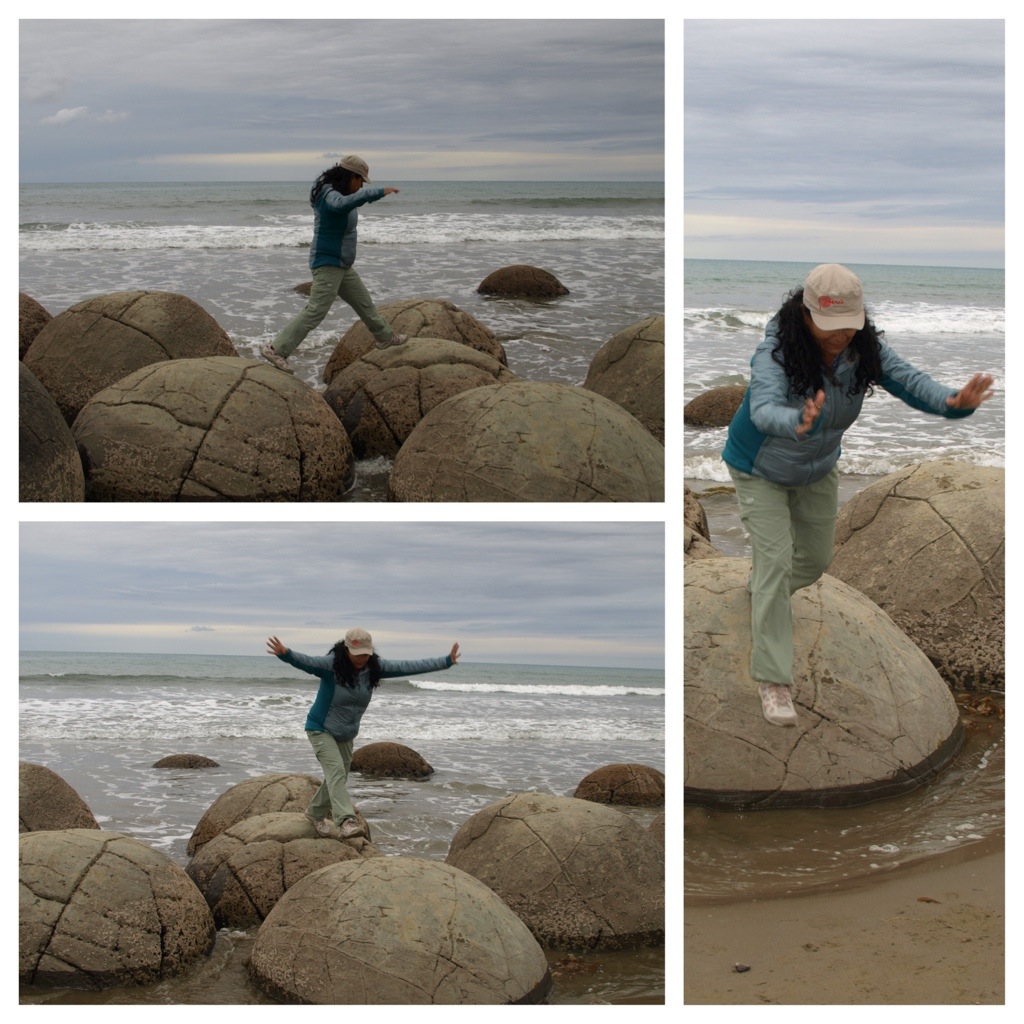
More from Milford Sound on the day of our sight-seeing cruise
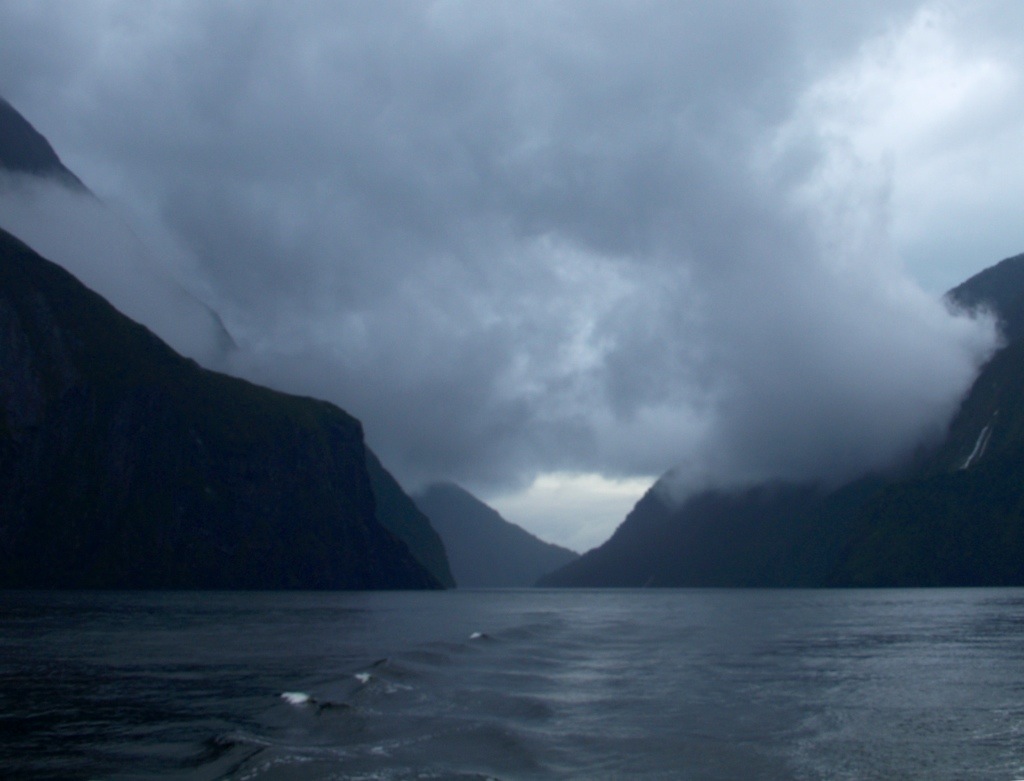
The permanent waterfalls were bulging with extra water from the rain.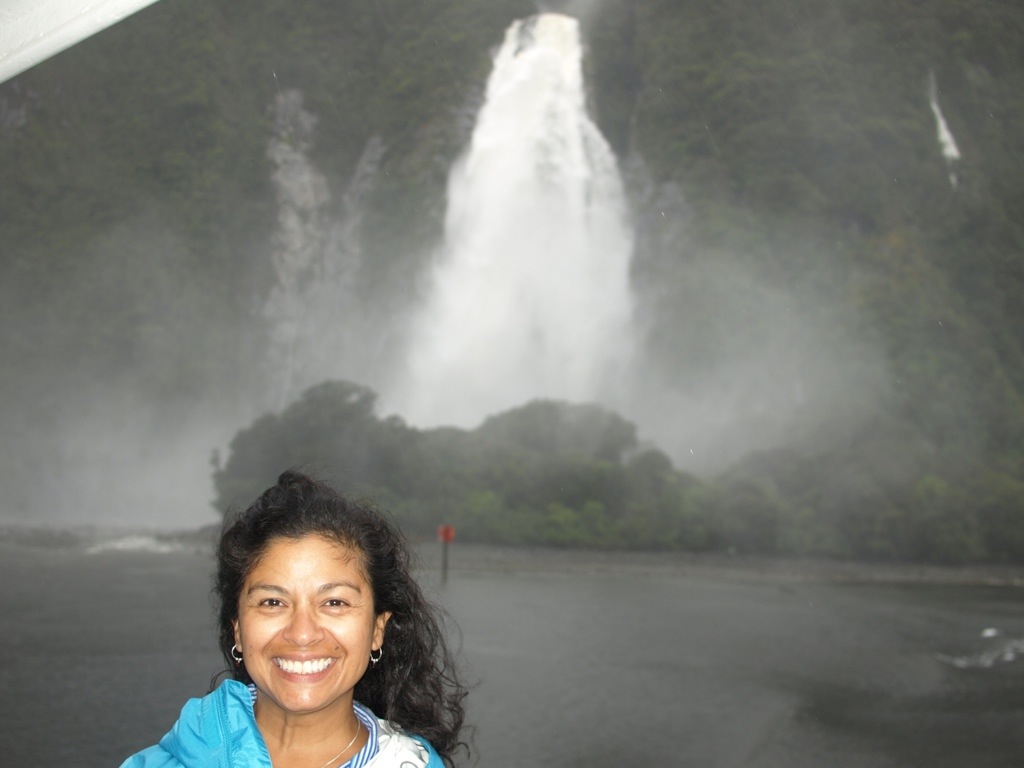
Fur seals frolic amid the raindrops.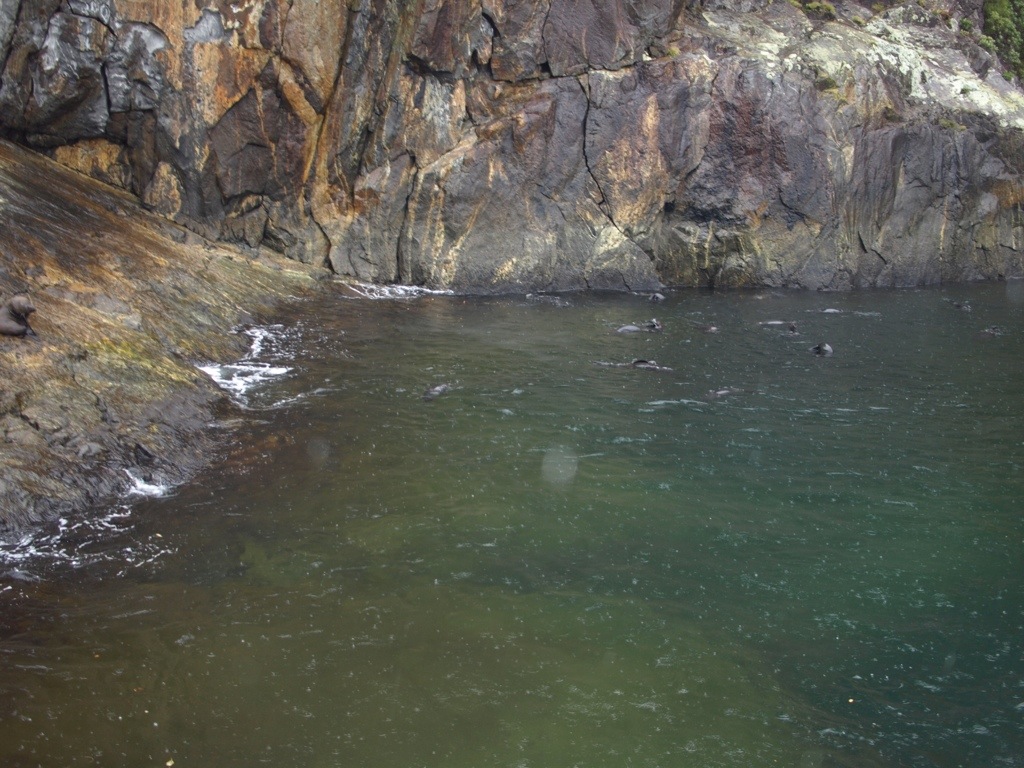
Temporary waterfalls streamed down from the heavens all around.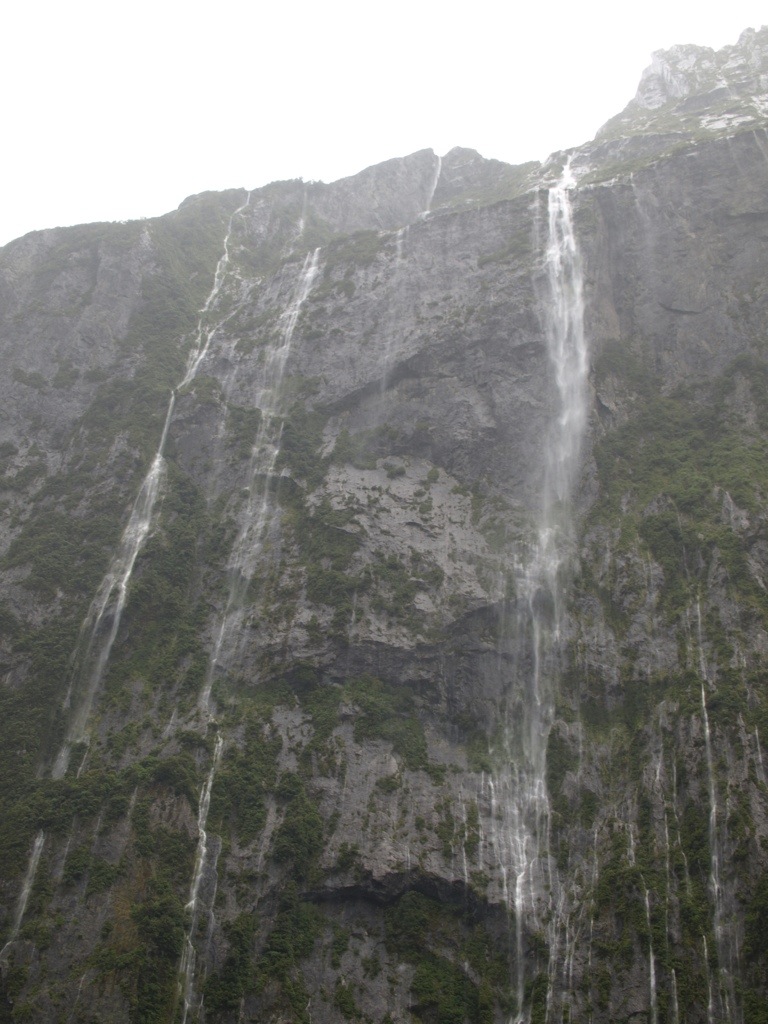
See the Chasm in action.
Nice Visit to the Antarctic Center
It was something like $35 per person! We debated whether or not to go for about an hour. Glad we finally sucked it up, paid the dang ticket and went.

So quick in the water they are!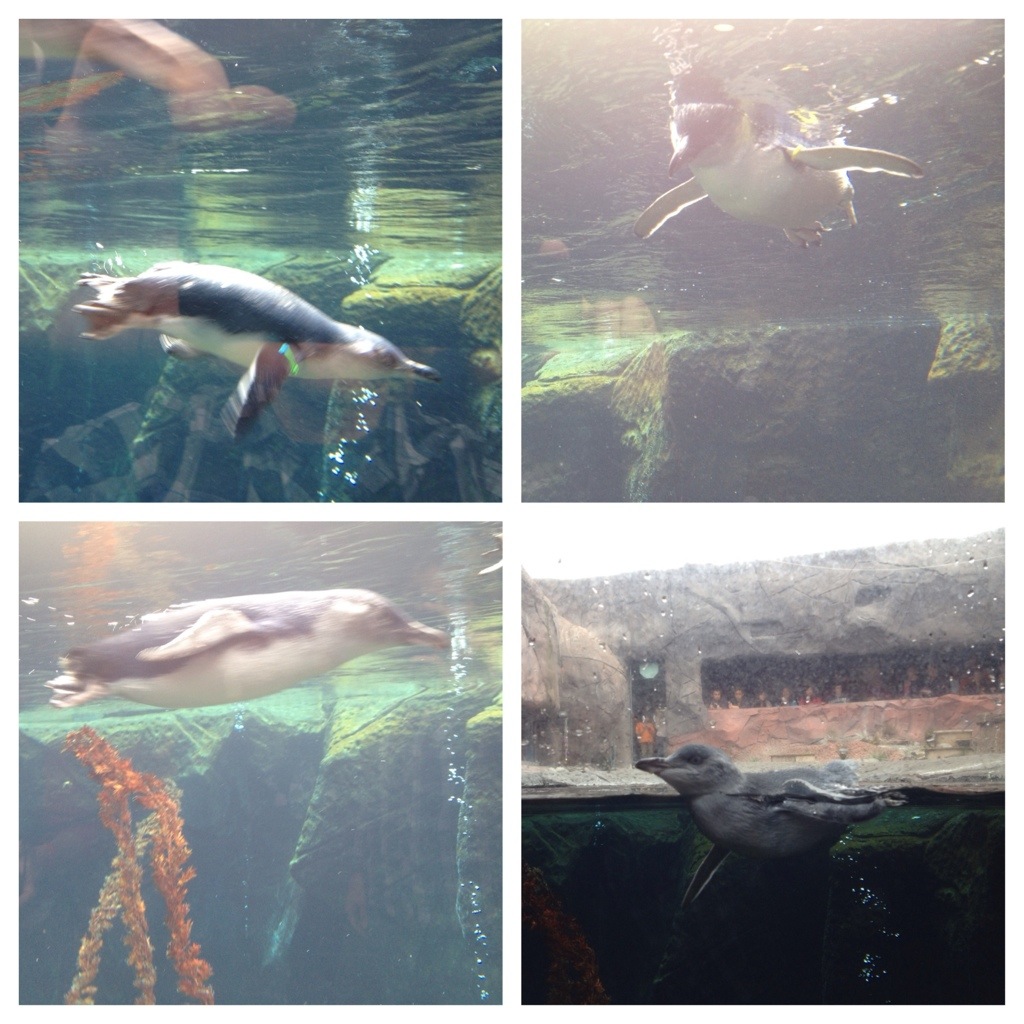
Animal feeding time.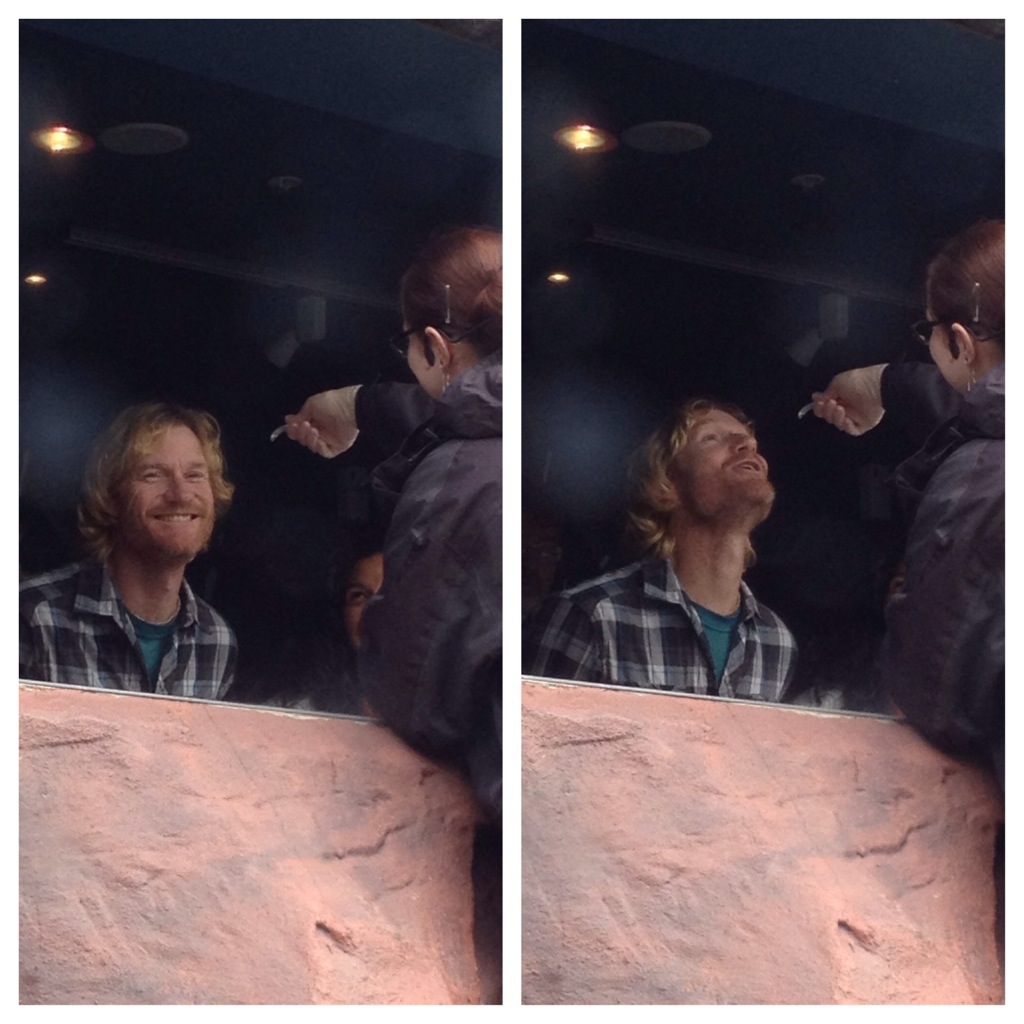
Dunedin
Photobomber strikes Boris on the Pukehiki Pennisula.
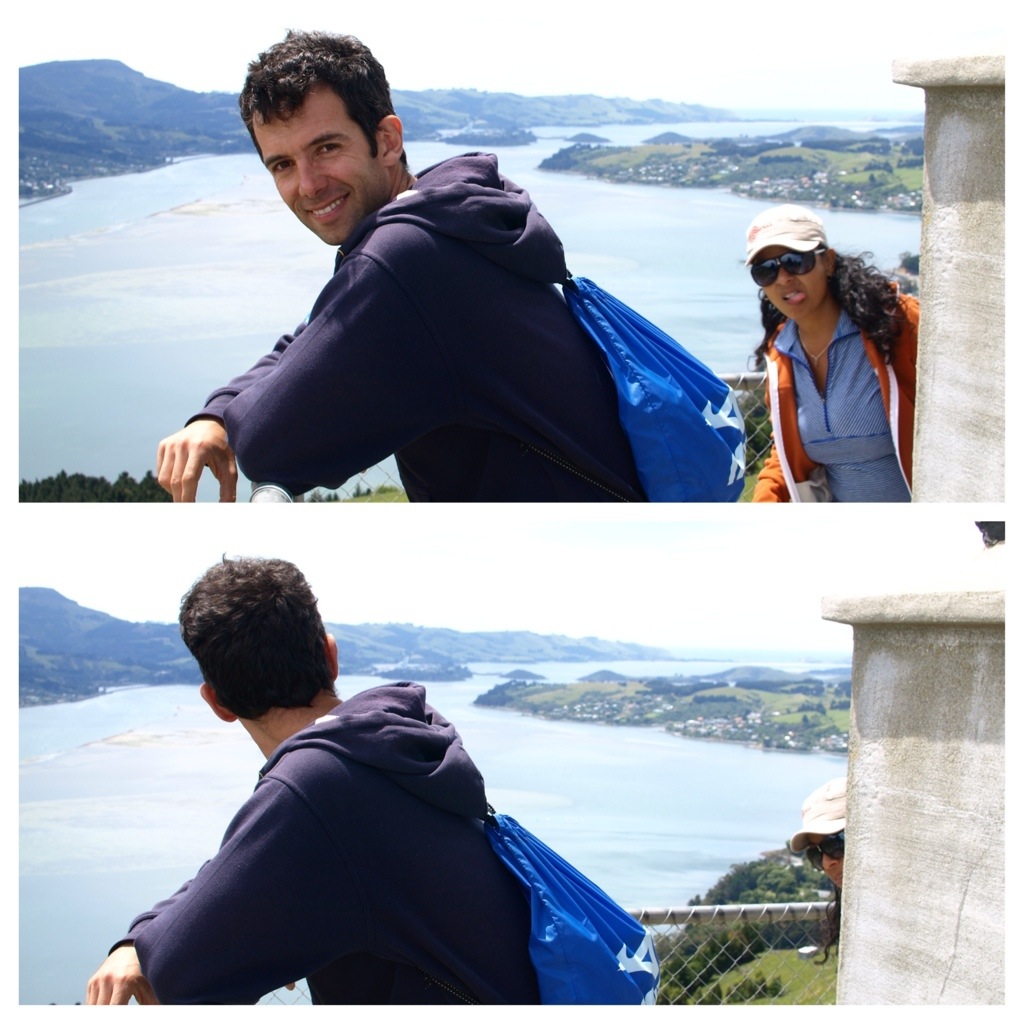
Baldwin Street- the steepest street in the world according to the Guinness Book of World Records.

A bench for resting sits at the top of the street, creatively painted with an image of the street itself.
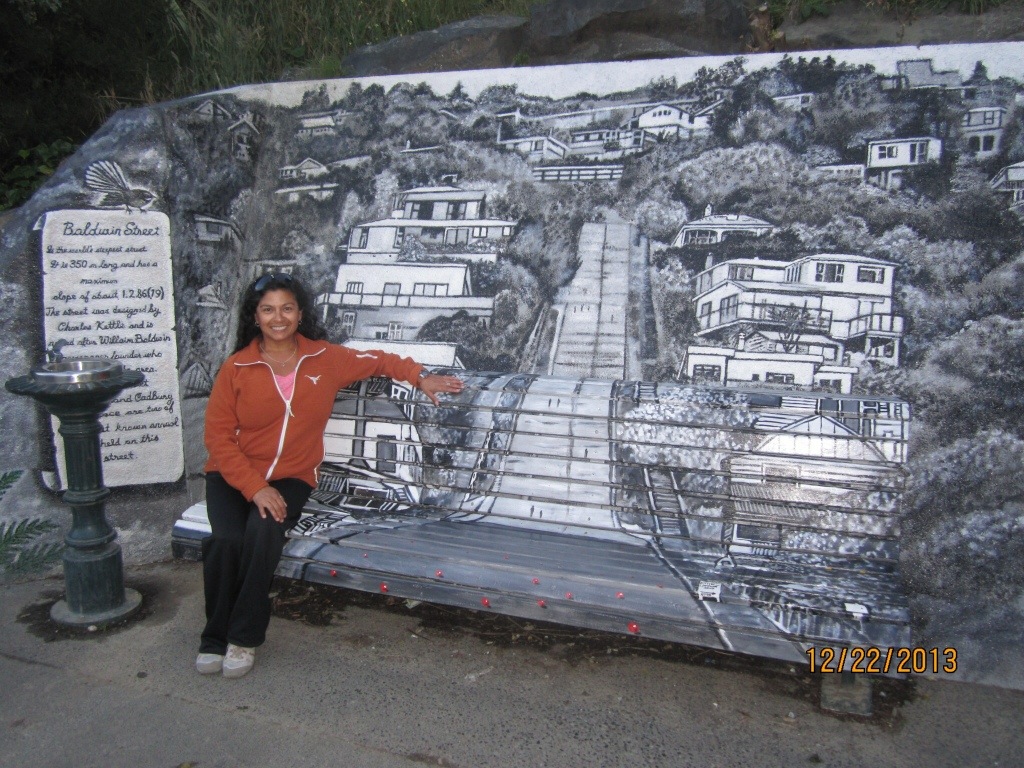
Hello little fella. (One of the Yellow-Eyed Penguins we spotted near Oamaru.)
Next up, Australia. Hope you’ll stay with us.

